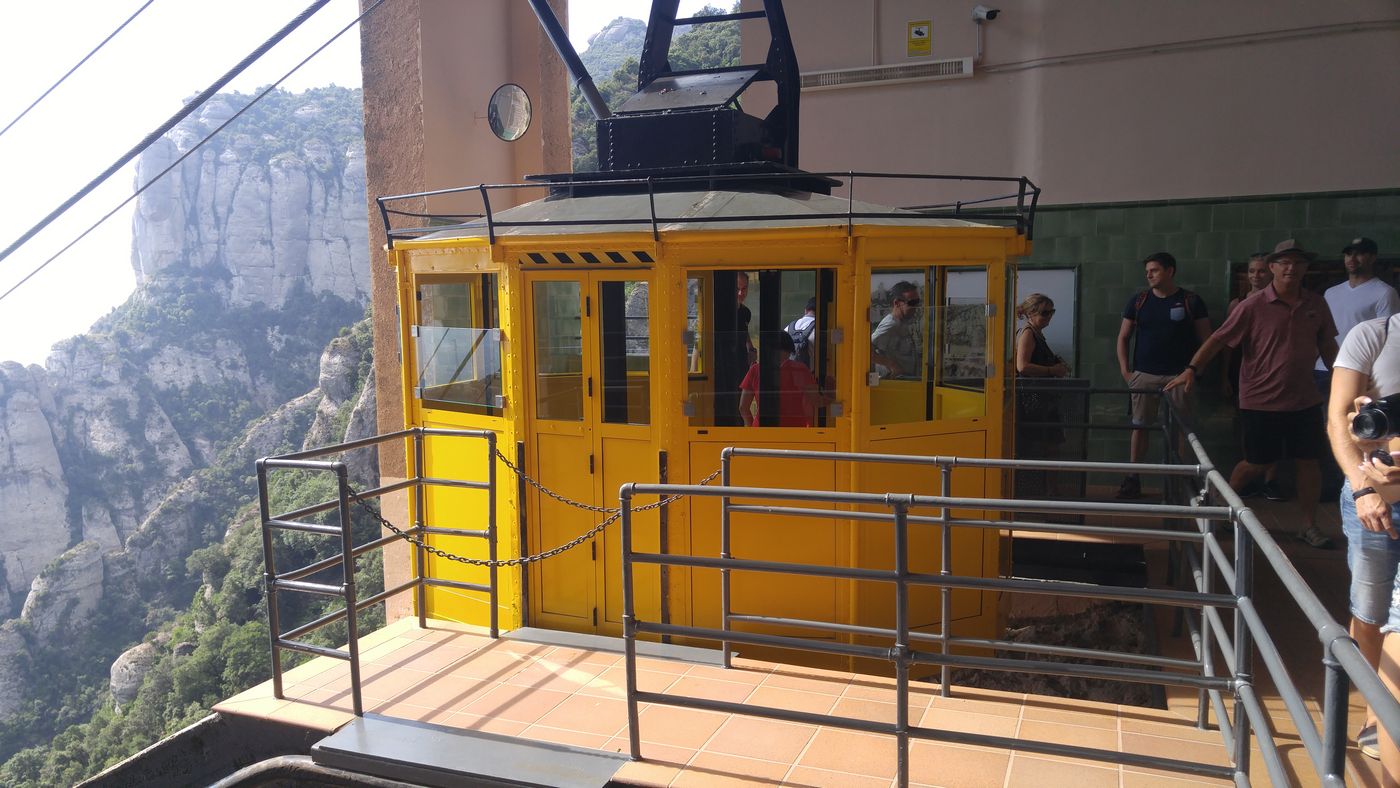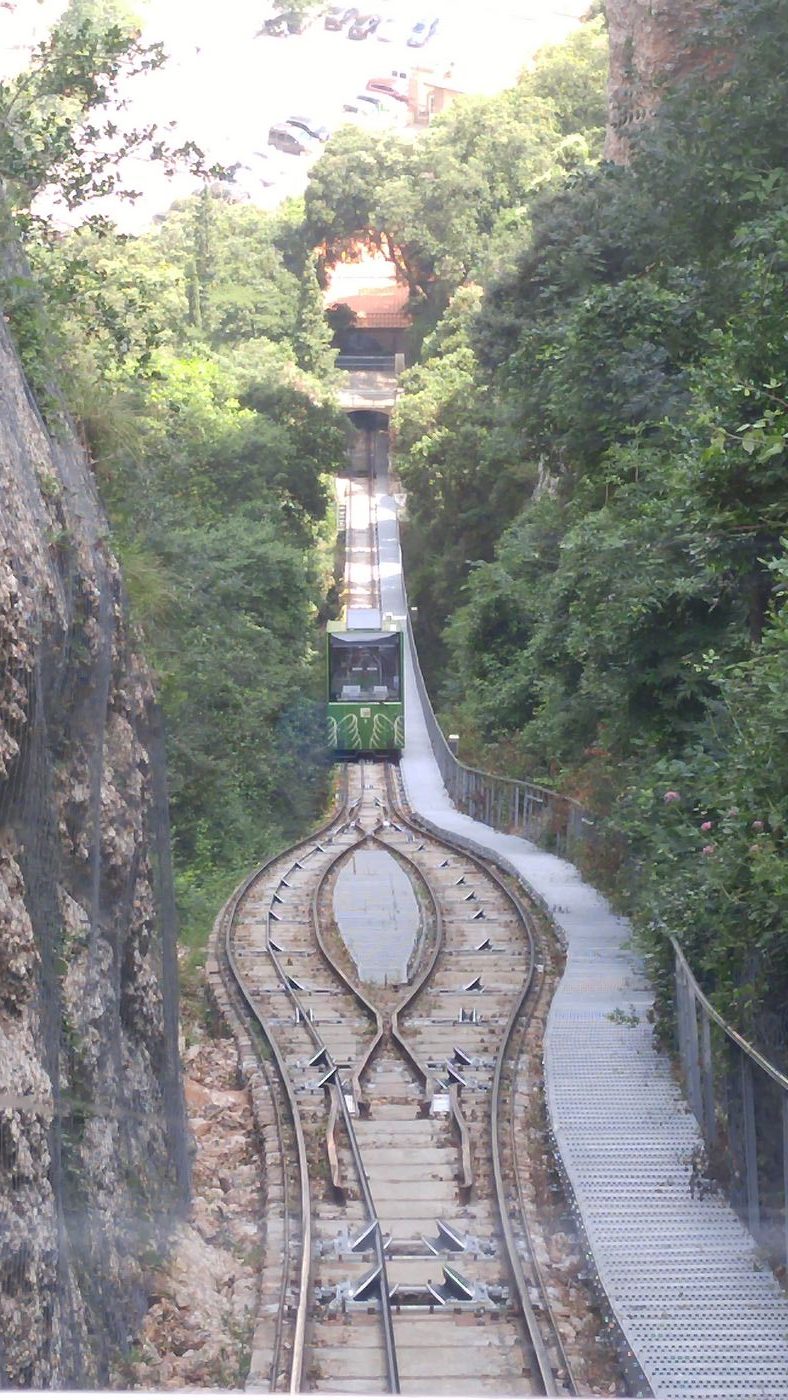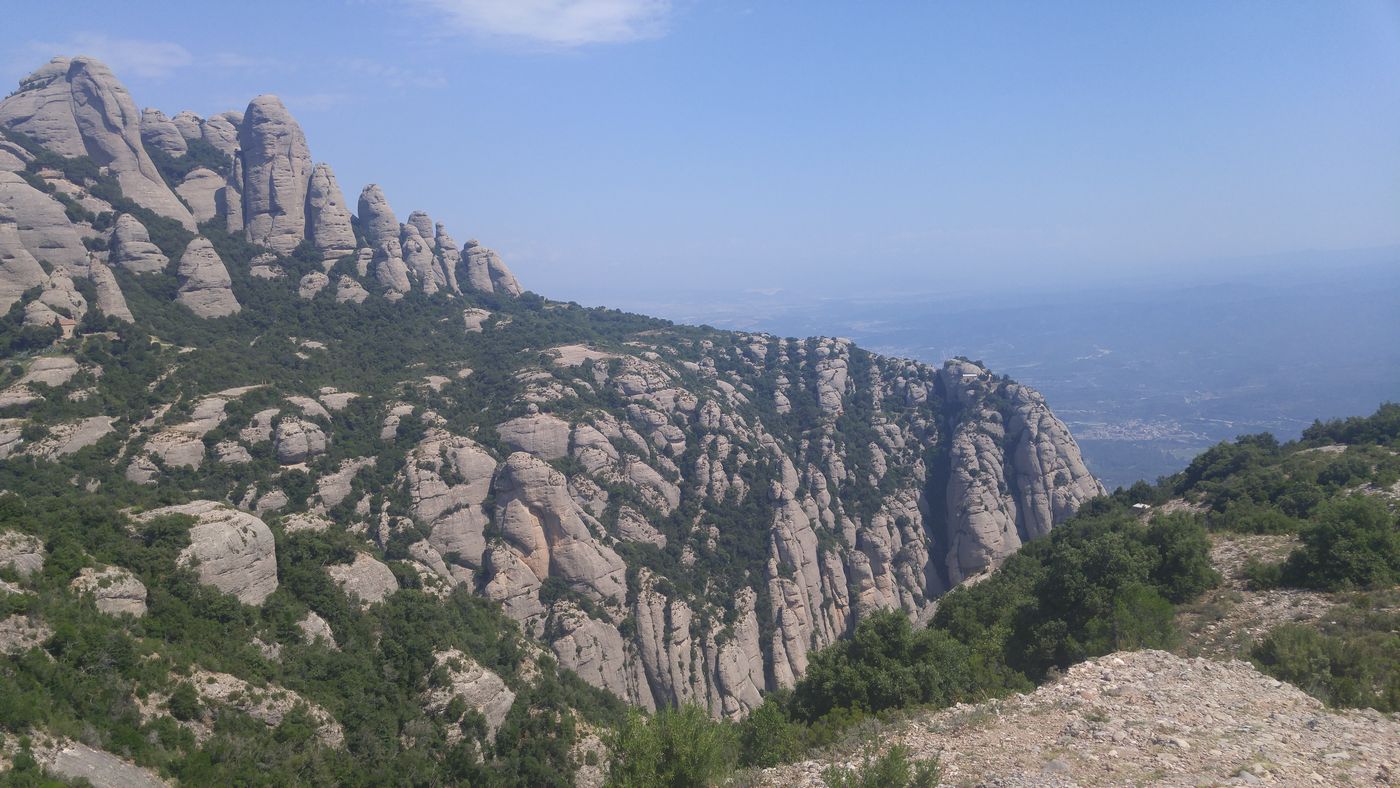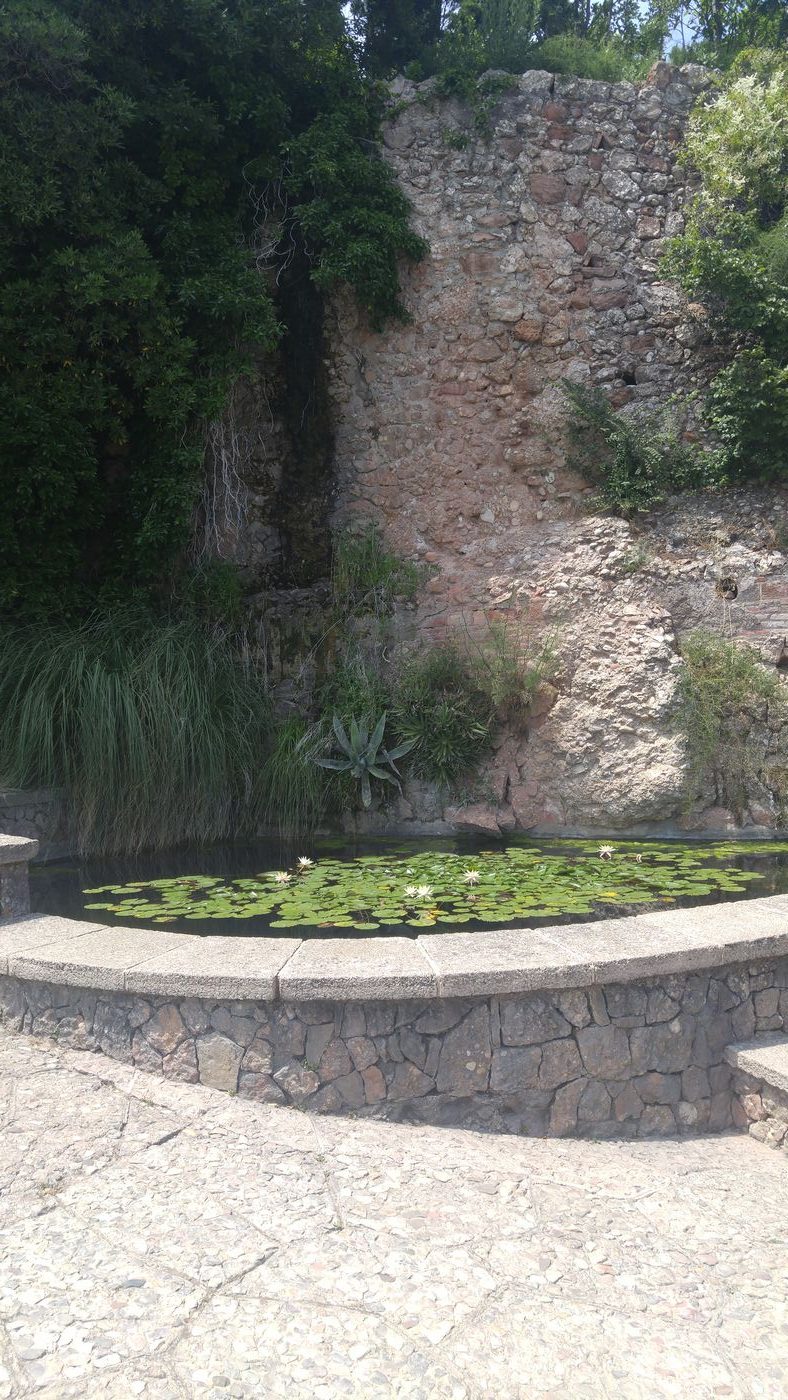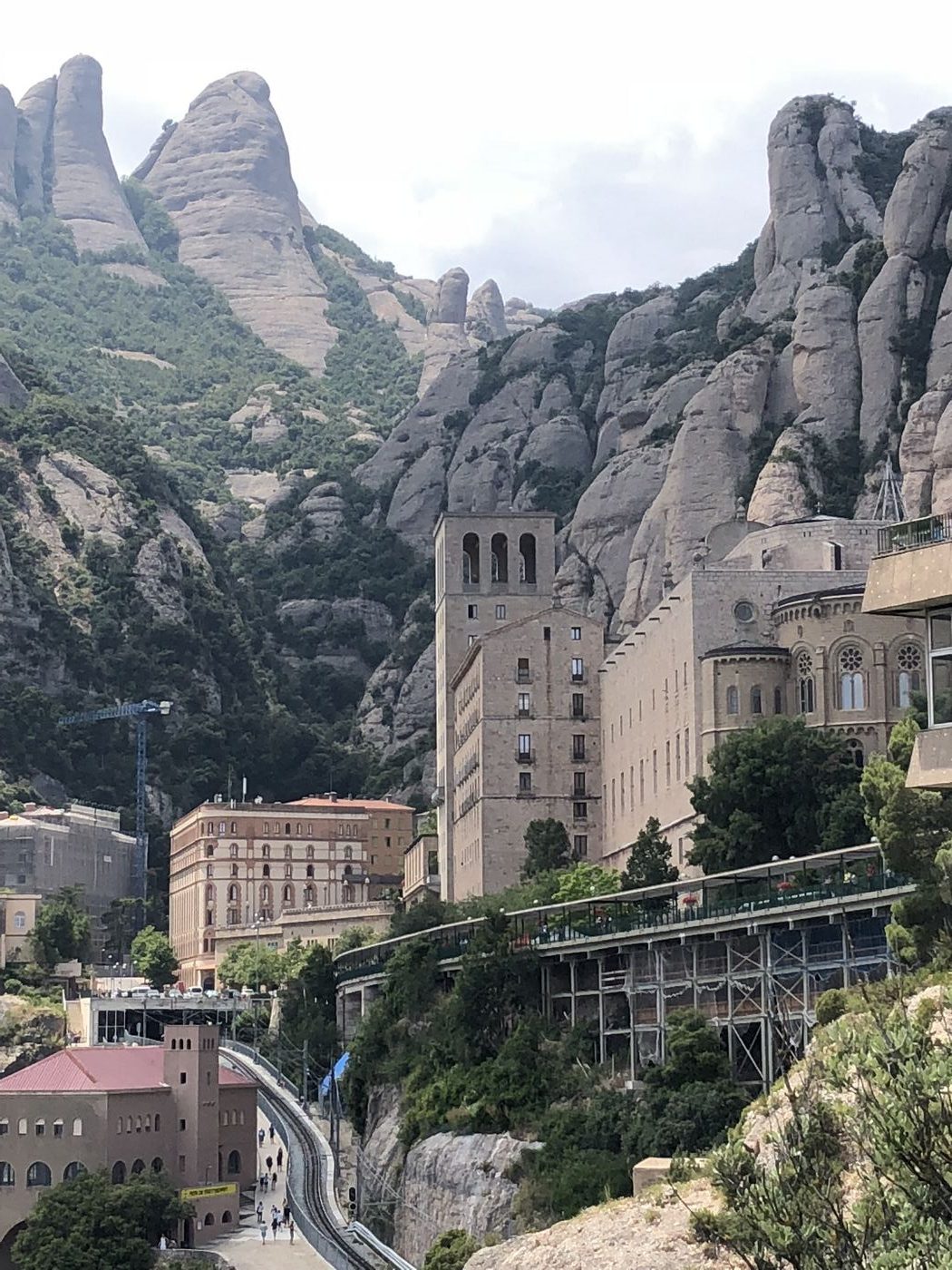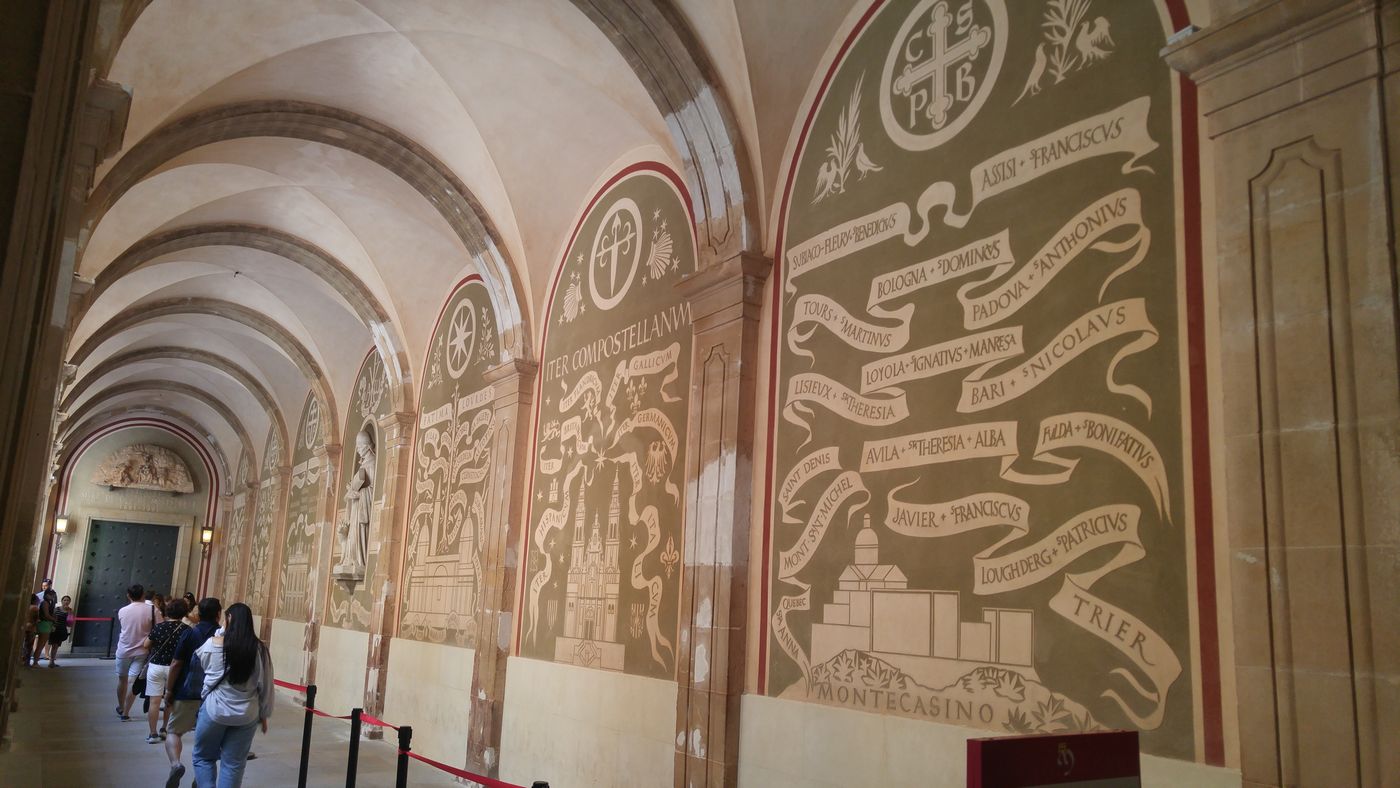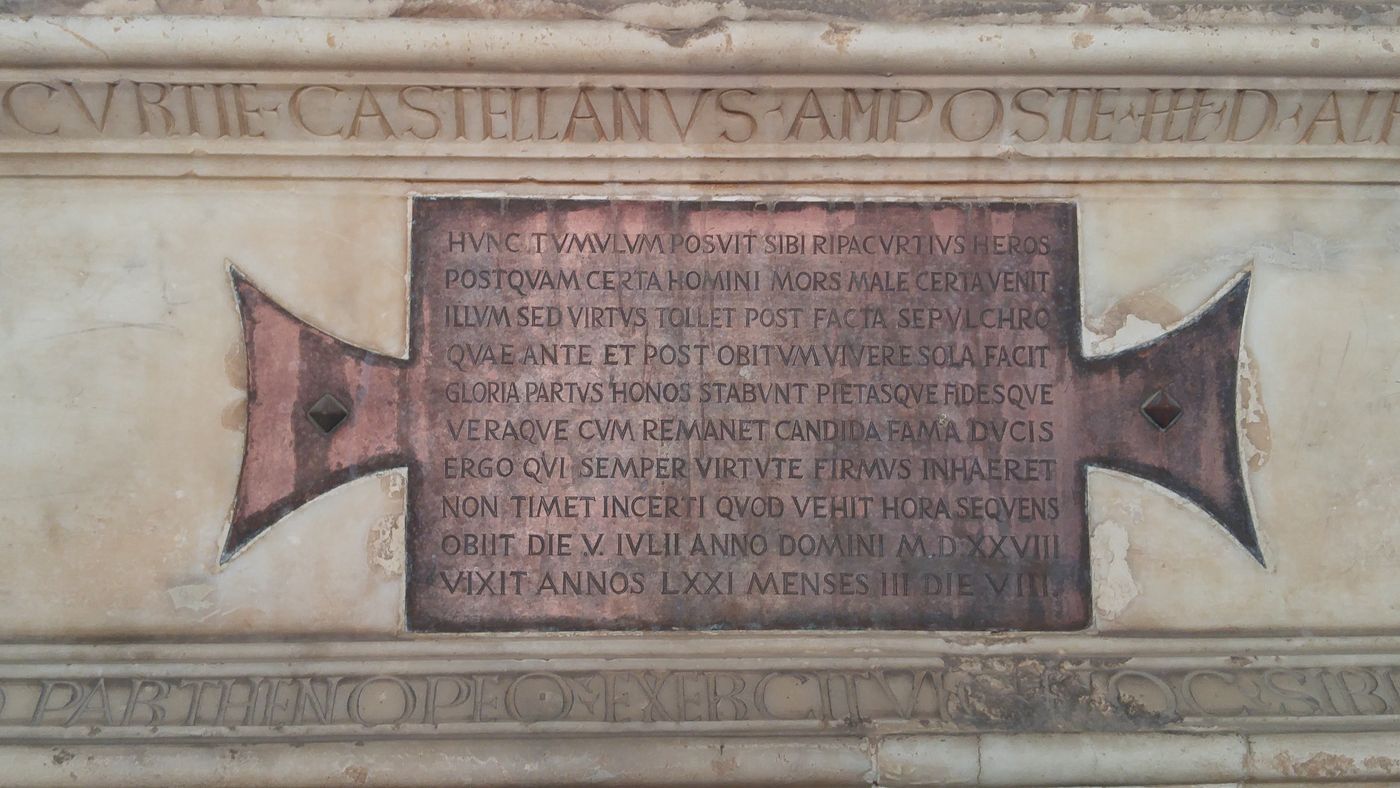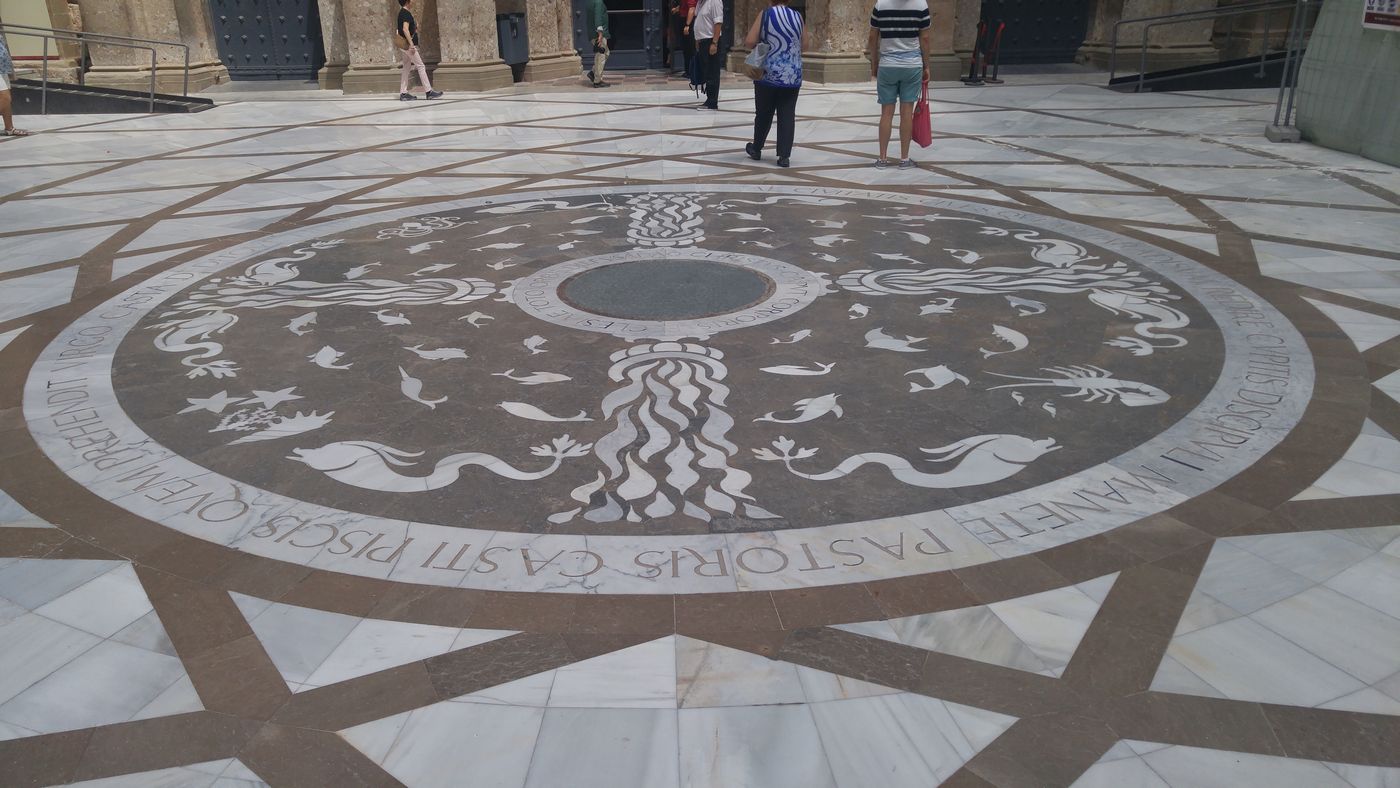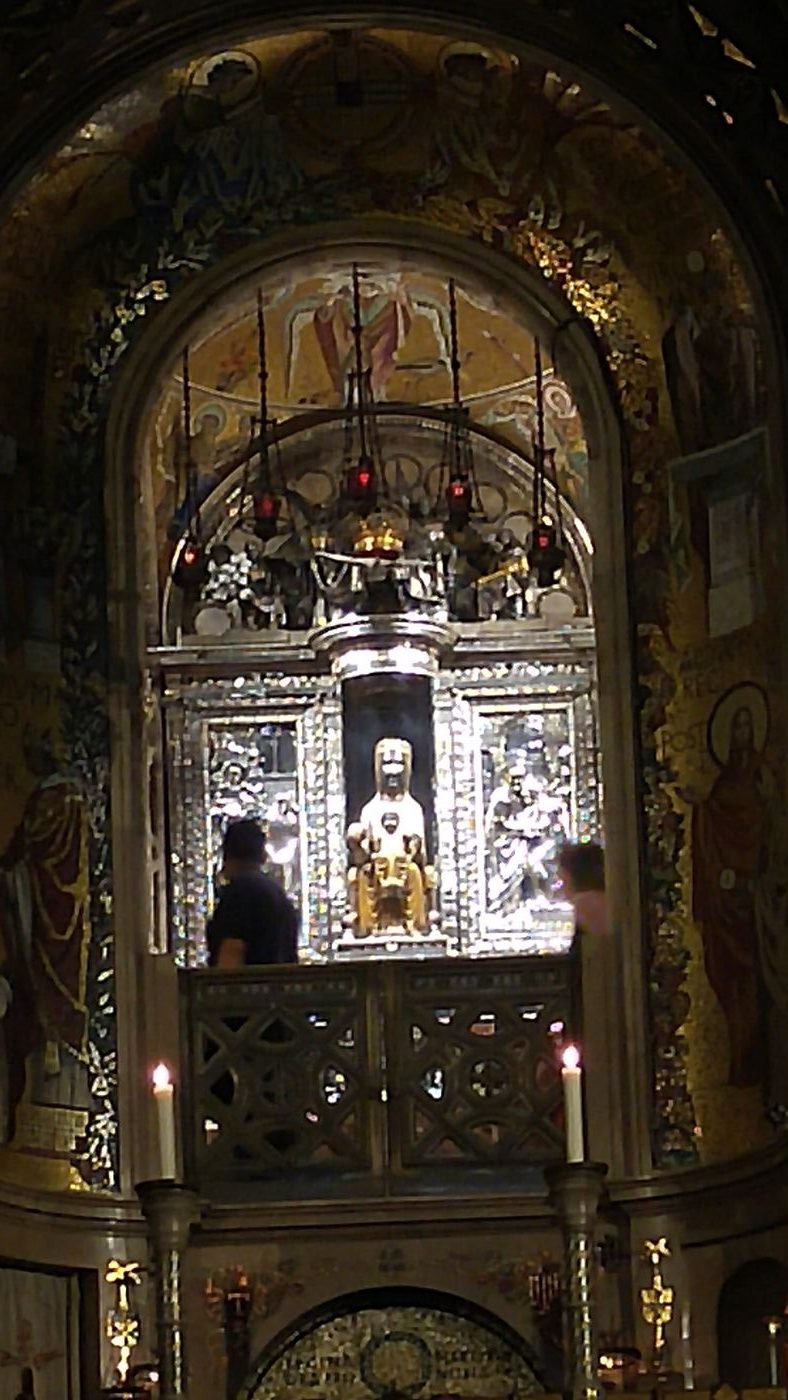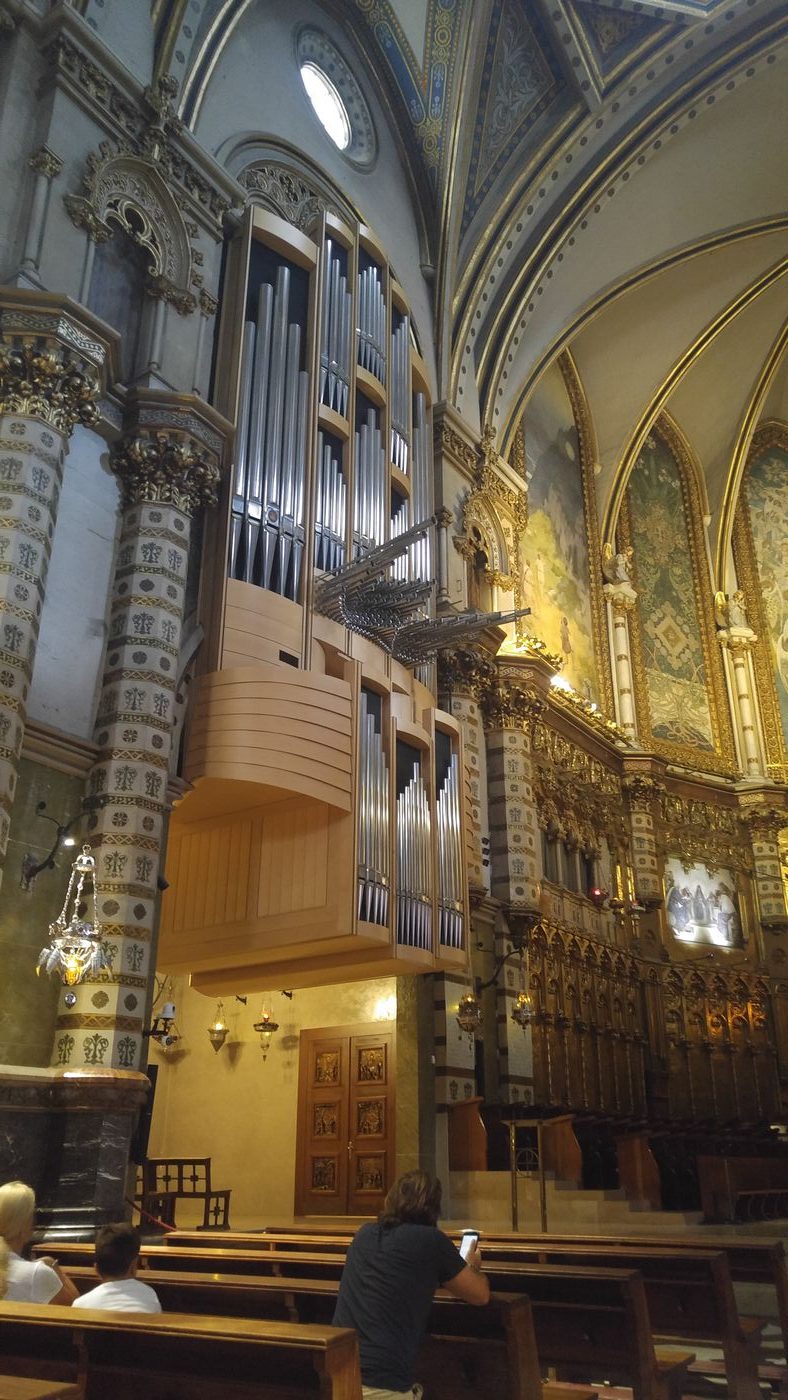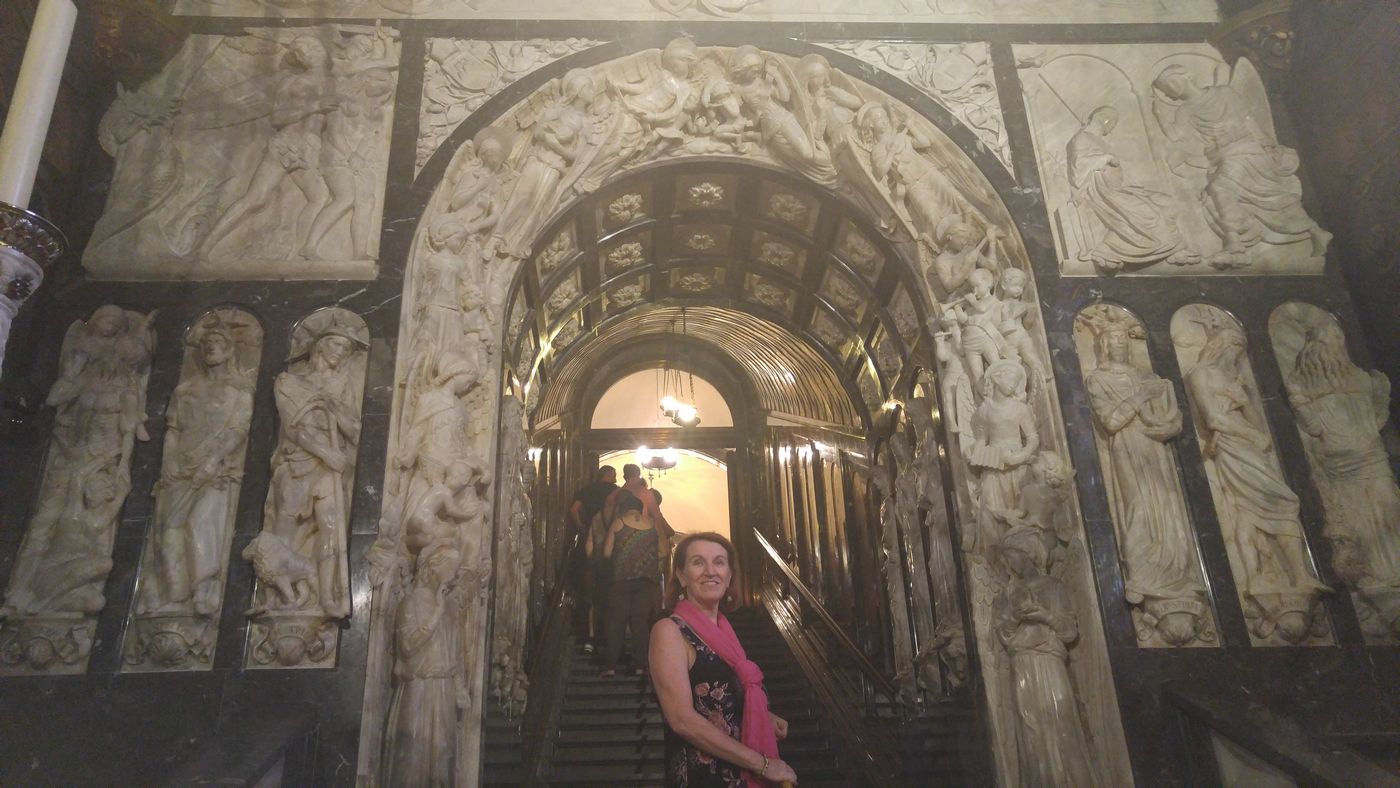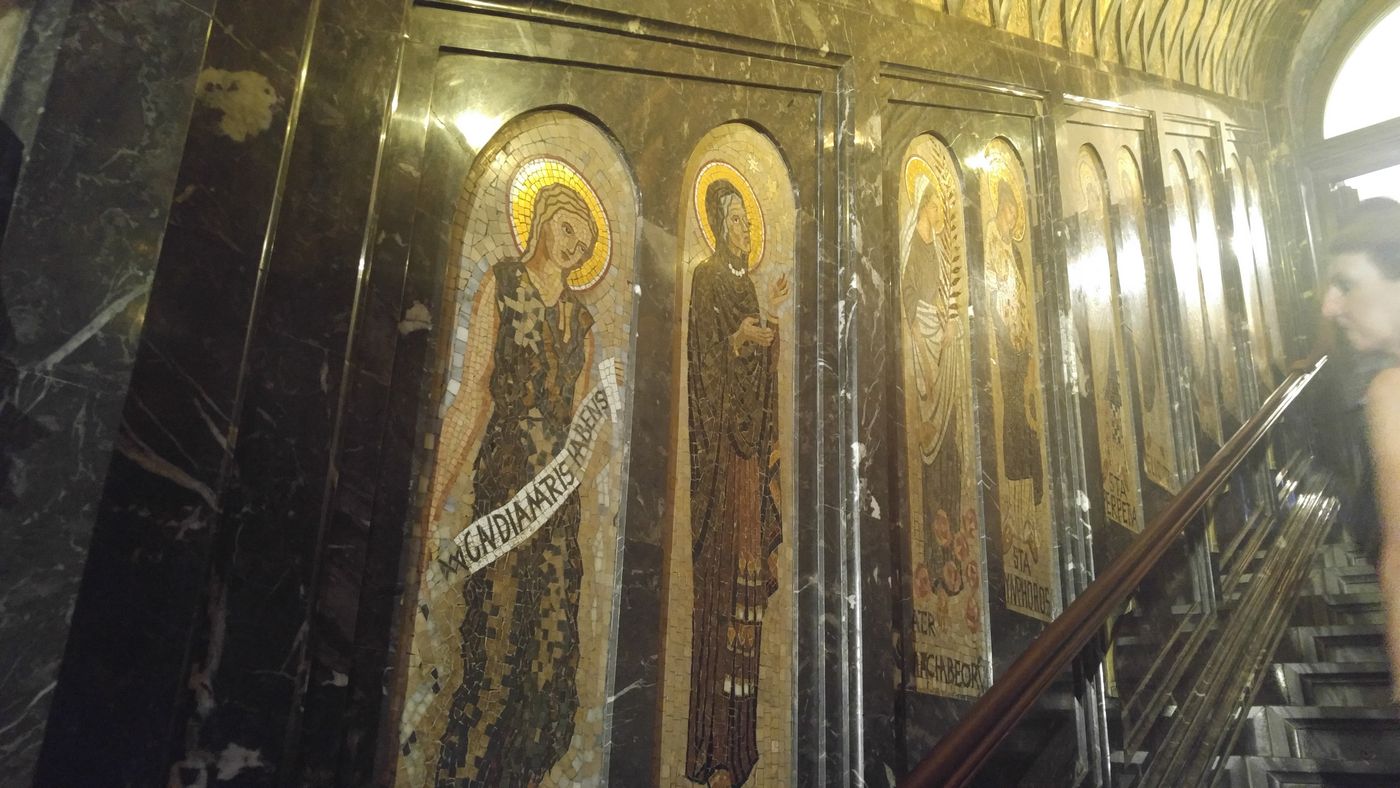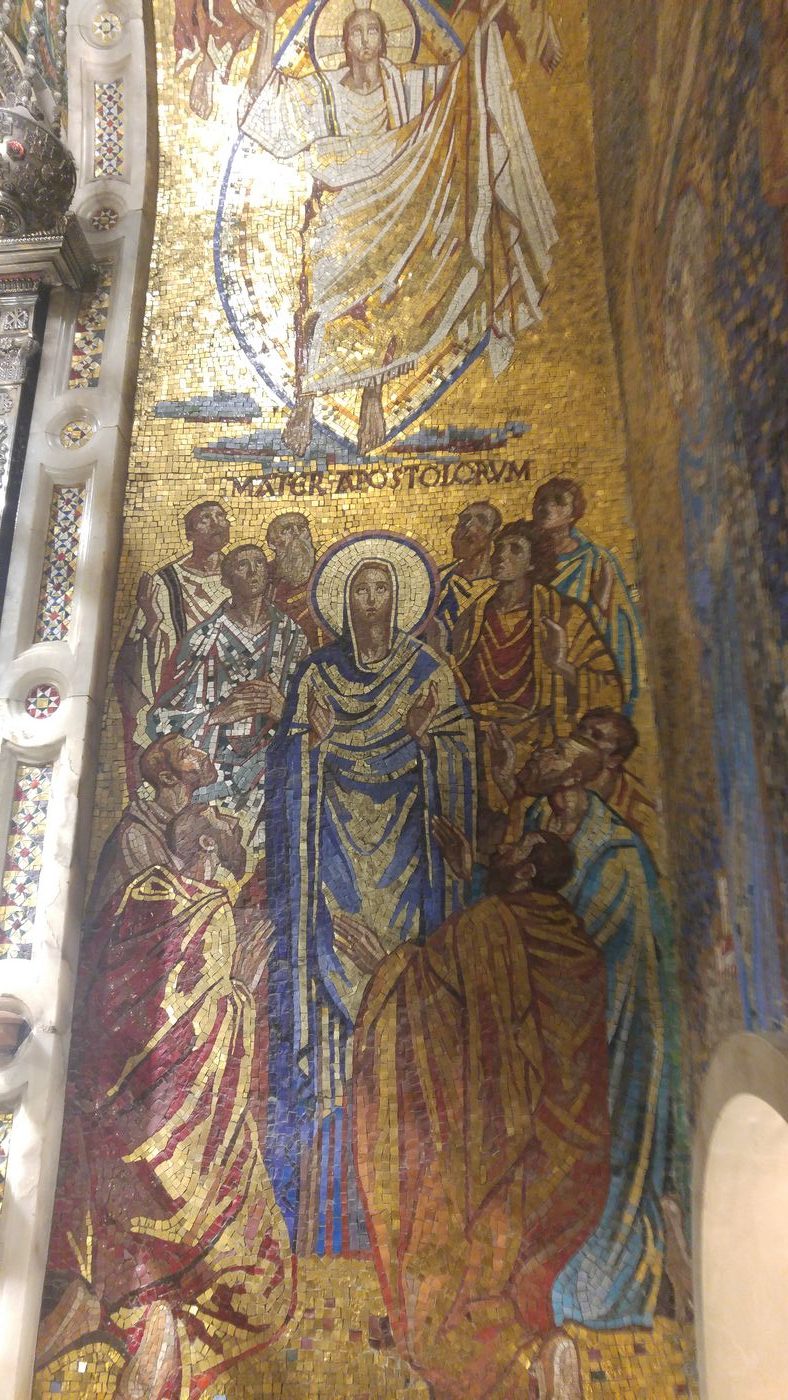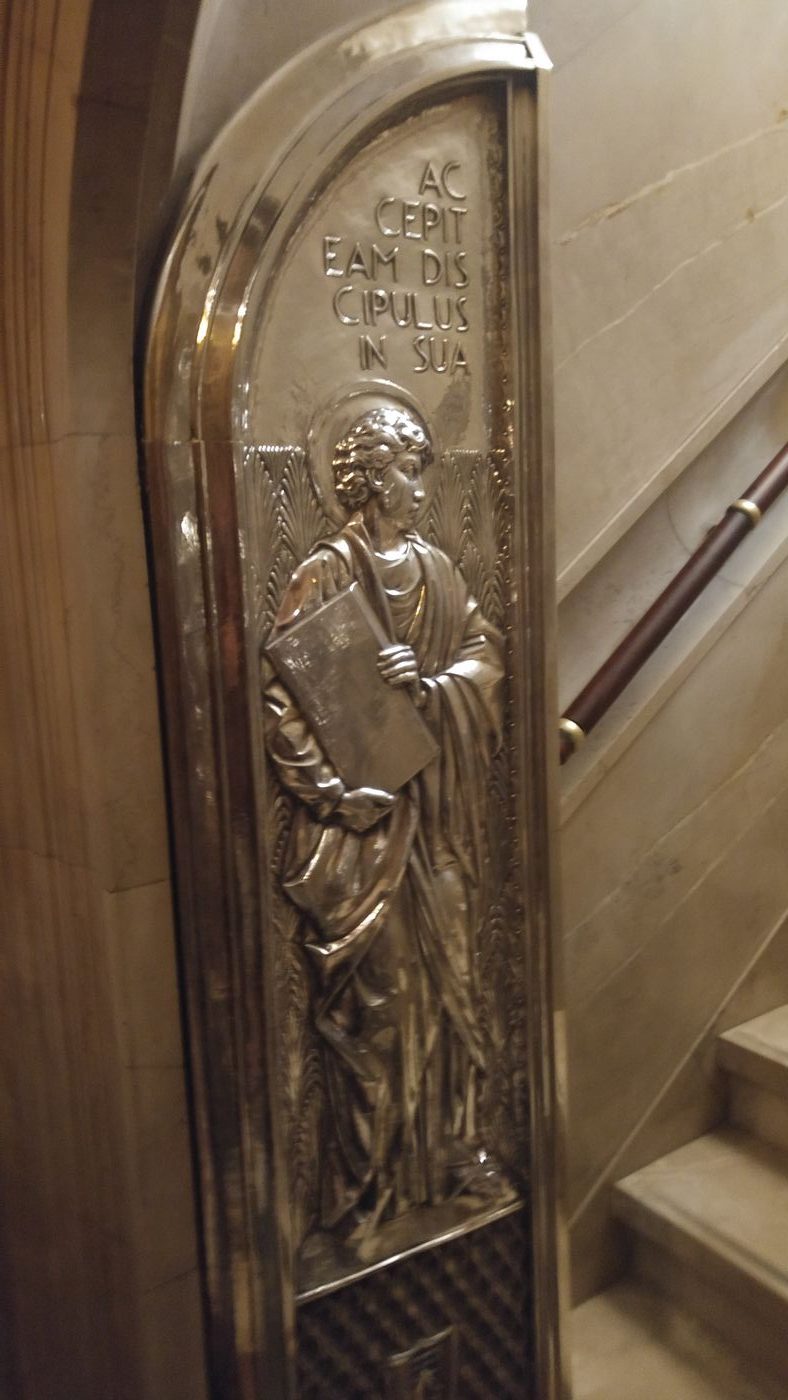On our recent trip to Spain we made sure to visit Montserrat outside of Barcelona. Most recently featured in Dan Brown’s book Origin our traveling crew felt we had to include it on our itinerary. We were not disappointed. In fact, it was one of the highlights of our trip.
What made it so special?
- The history – It’s an operating monastery and abbey since 1025 AD
- The uniqueness – Home to the Catalonian “Black Madonna” statue
- The wonder – Built high atop the Montserrat mountains
- The awe – Spectacular grounds and panoramic views of the countryside
We took an hour train ride from Barcelona northwest to the Montserrat mountain range . . . .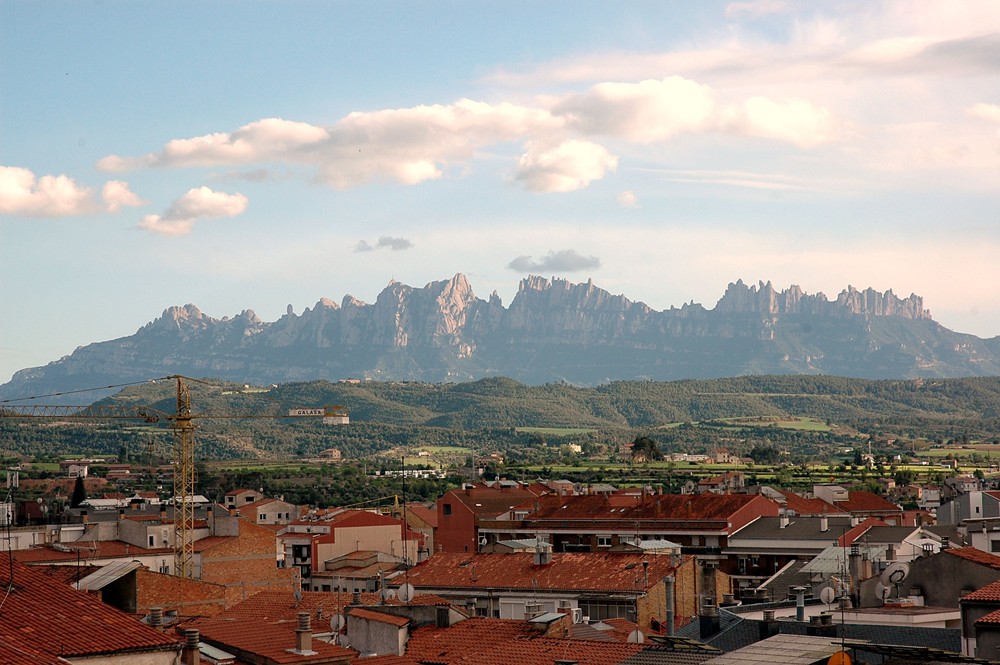 Photo by Josep Renalias – Own work, CC BY-SA 3.0, Link
Photo by Josep Renalias – Own work, CC BY-SA 3.0, Link
Montserrat means “serrated mountain” in Catalan, which describes the appearance of the range; as it looks like a jagged saw tooth. It’s Spain’s first National Park, and its tallest peak is Sant Jeroni at 1,236 meters (4,055 feet).
The Montserrat Abbey is nestled high in that range and is accessible three ways: by road, the Montserrat Rack Railway, or the Aeri de Montserrat cable car. We opted for the cable car ride up to the abbey which is located right next to the rail line stop.
Once you arrive at the abbey you also have the option of taking two funiculars for further exploration and adventure:
- Funicular de Sant Joan goes further up to near the top of the mountains and its various trails to several peaks and/or a path back down to the abbey.
- Funicular de la Santa Cova descends below the abbey to a path leading towards various shrines and the cave where the statue of the Black Madonna (Our Lady of Montserrat) was reportedly found more than 1,100 years ago.
Some History
There are various caves in the mountain range due to its geological formations. The first evidence of their use by hermits was back in the 7th century AD, with them erecting tiny chapels at various spots throughout the range over the centuries. Moorish occupation occurred during the 8th & 9th centuries. Wilfred The Hairy (Count of Barcelona) regained these lands from the Islamic armies, wherein documentation shows he donated some of it to the Monastery of Ripoll in 888 AD, including the various chapels of Montserrat.
According to legend the statue of The Black Madonna (“La Moreneta”) was found in 880 AD by pastors from the town of Monistrol while grazing their flocks on the mountain. At dusk the pastors saw a light and heard heavenly singing in a place on the mountain. A beam of light was coming from a cave where they found the holy statue. They tried moving it to the town of Manresa but after a short distance it become frozen in place and unmovable. The Ripoll monks decided to build a church and worship the Lady at that spot, erecting the chapel of Santa Maria. Then about 1025 AD they built the monastery of Santa Maria de Montserrat next to the chapel.
Work on the present church began in 1560. Historically there were twelve individual hermitages in Montserrat, but they fell into disuse and destruction during the French War when Napoleon’s troops sacked and burned the abbey and its chapels in 1811. Reconstruction of the abbey and monastery did not start again until 1872 based on the plans of architect Francisco de Paula del Villar Lozano. The reconstruction was consecrated as a basilica in 1881 when Our Lady of Montserrat was proclaimed Patron Saint of Catalonia. Many artists employed in the reconstruction were linked to the Art Nouveau movement (known as Modernism in Catalonia).
The abbey’s facade was reconstructed between 1942 and 1968 after the Spanish Civil War – during which saw the violent suppression of the Abbey. It was a sanctuary for scholars, artists, politicians and students during and after the war, and was seen as a symbol of Catalan nationalism.
It was restored again between 1991 and 1996. There are numerous side chapels with beautiful art and architecture from the late 1800s and beyond. The monastery is still functioning with about 70 Benedictine monks. It remains Catalonia’s most important religious retreat.
The views are spectacular and we had a wonderful lunch in the formal dining room full of fantastic panoramic windows.
The only places we didn’t get to visit were the Museum and lower funicular (lack of time and energy) and the abbey’s library, cloister and gardens – – which I don’t believe were accessible to the general public – although, I tried getting into the gardens…. 🙂
Why was this a visit we wanted to make – particularly since it’s religious and I’m a heretic? Well….three reasons:
- Adventure – seeing an exotic and unique place in another part of the world
- Beauty – experiencing the amazing beauty of not only the art, architecture and landscaping, but also the impressive natural mountains and spectacular views
- Awe & Wonder – seeing something that was built high upon a mountain, destroyed, rebuilt and a dedication that has endured throughout 12-centuries of frail human existence.
Johannes Janssonius engraving of 1657: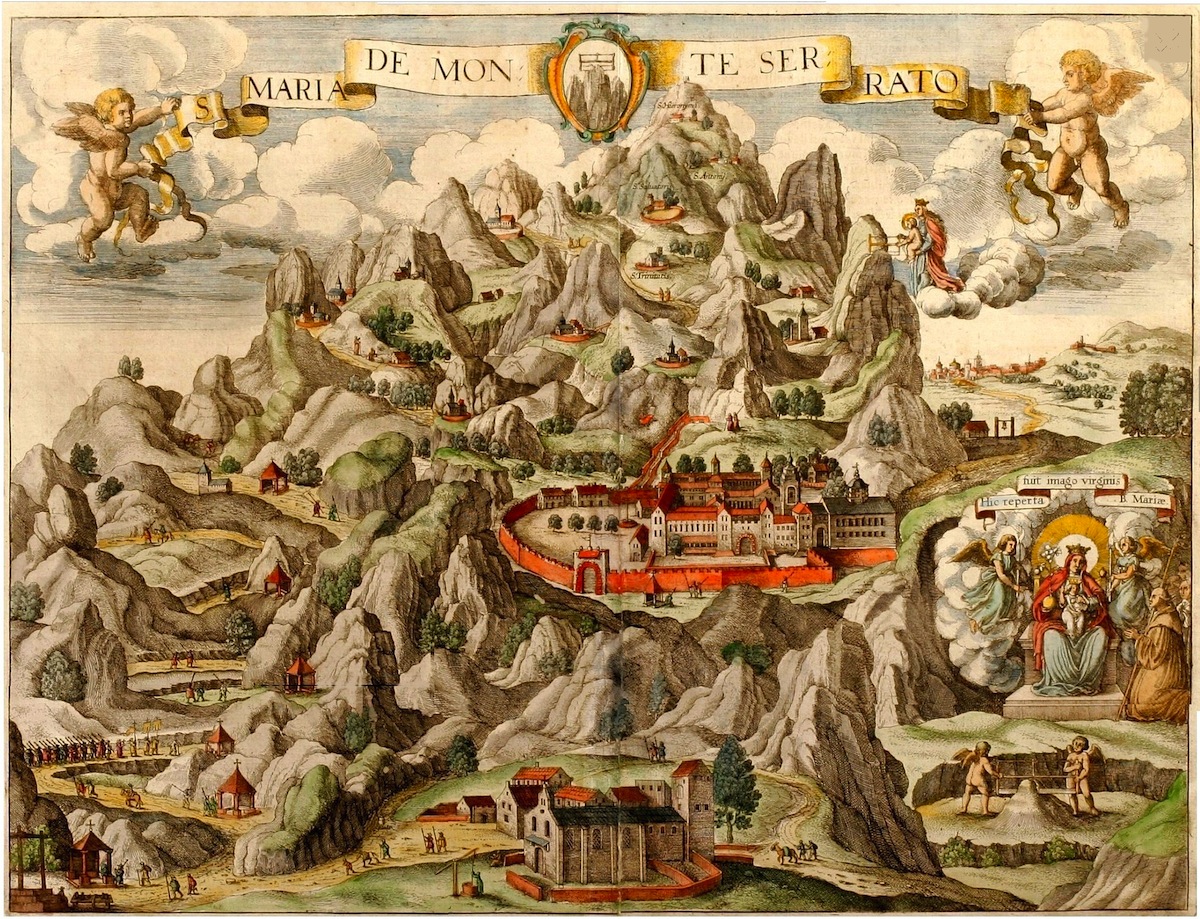
Images
The following images were photographed by me and are governed by Creative Commons License Attribution-ShareAlike – CC BY-SA (except otherwise noted)
Arrival and cable-car up to the Monastery
First view of Montserrat Monastery from our arriving train (you can see the structure in the upper-right side of the photo):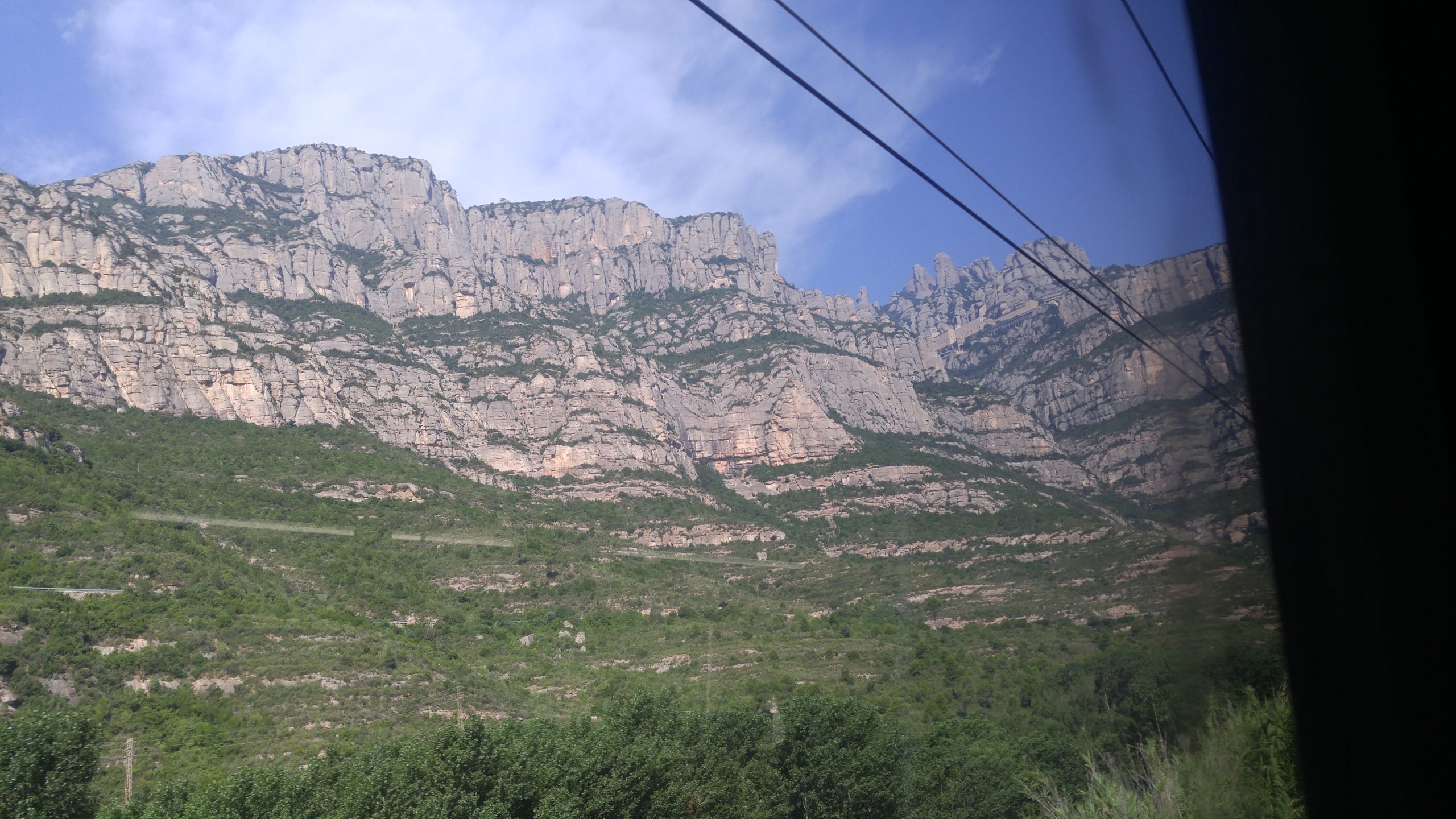
On the way up via the cable-car: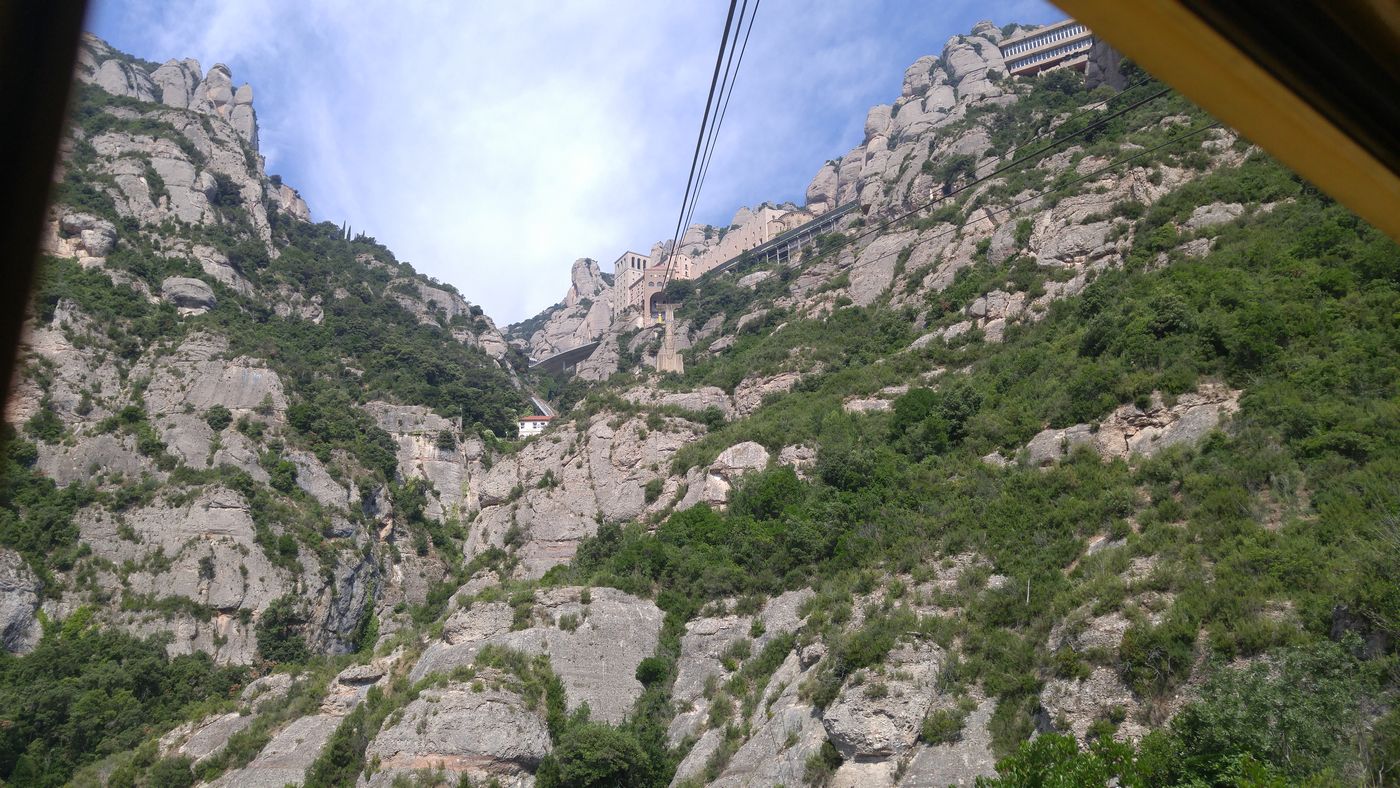
View from the top of the cable-car station: 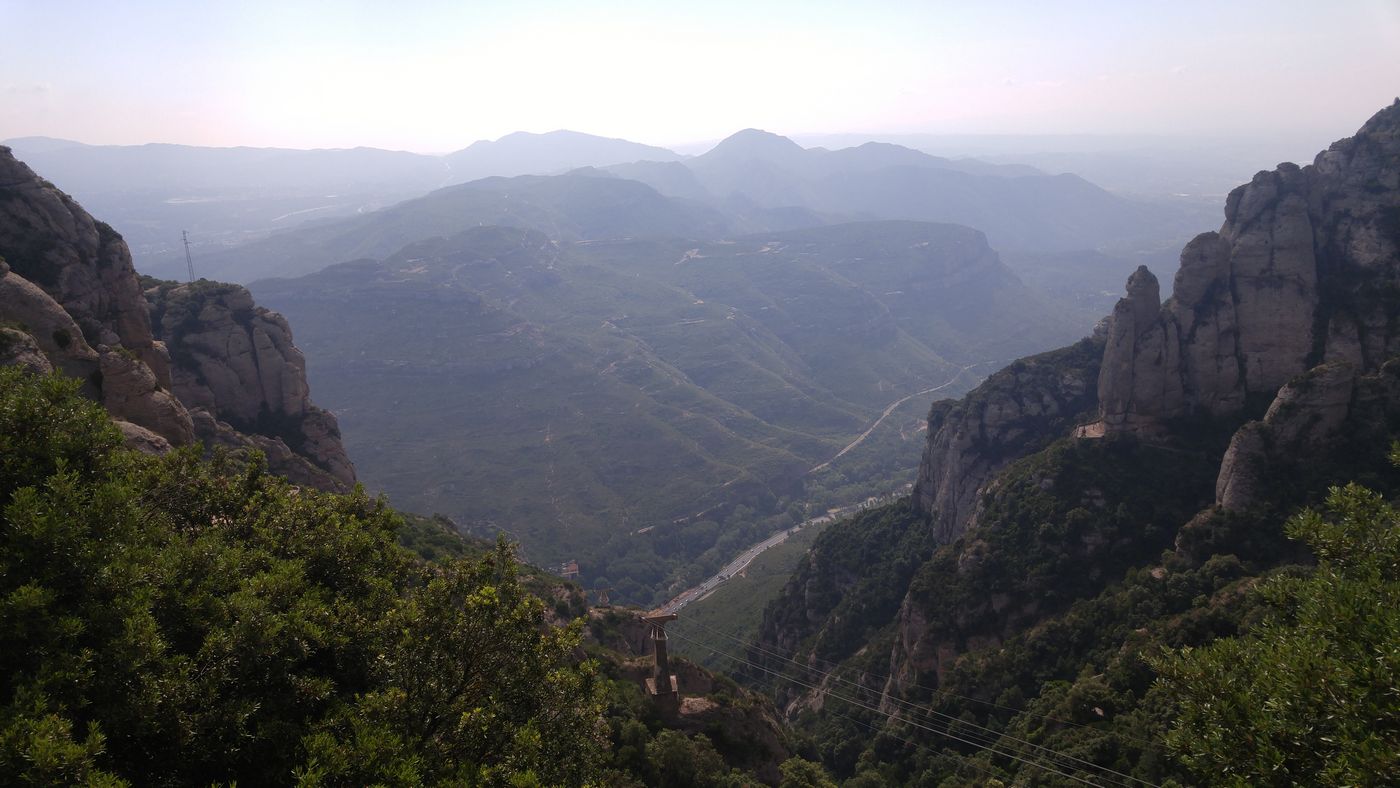
The Grounds
The following image copyright Matthew Costello – all rights reserved: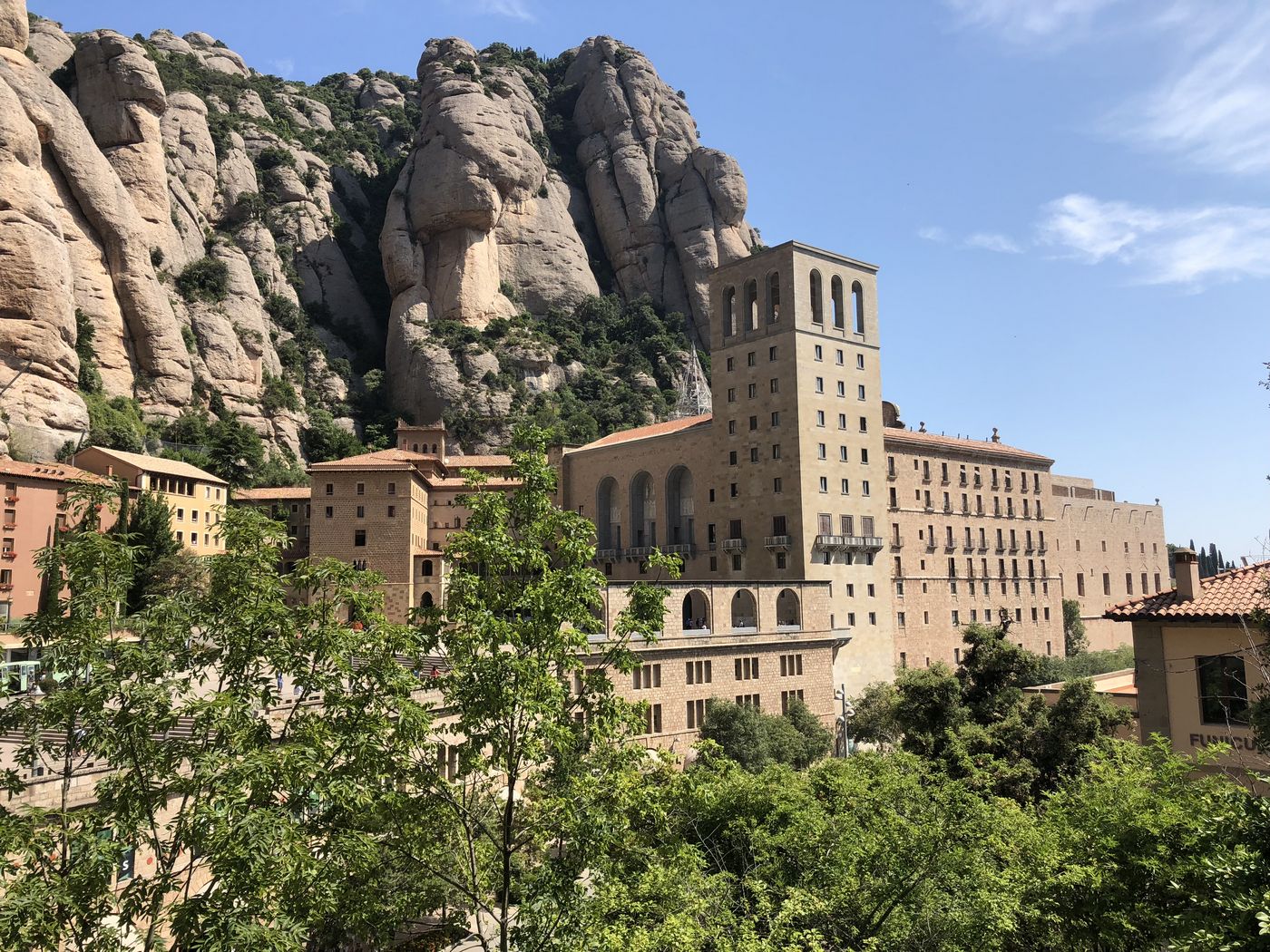
The monastery (left) and abbey (right):
Great view of the abbey from above: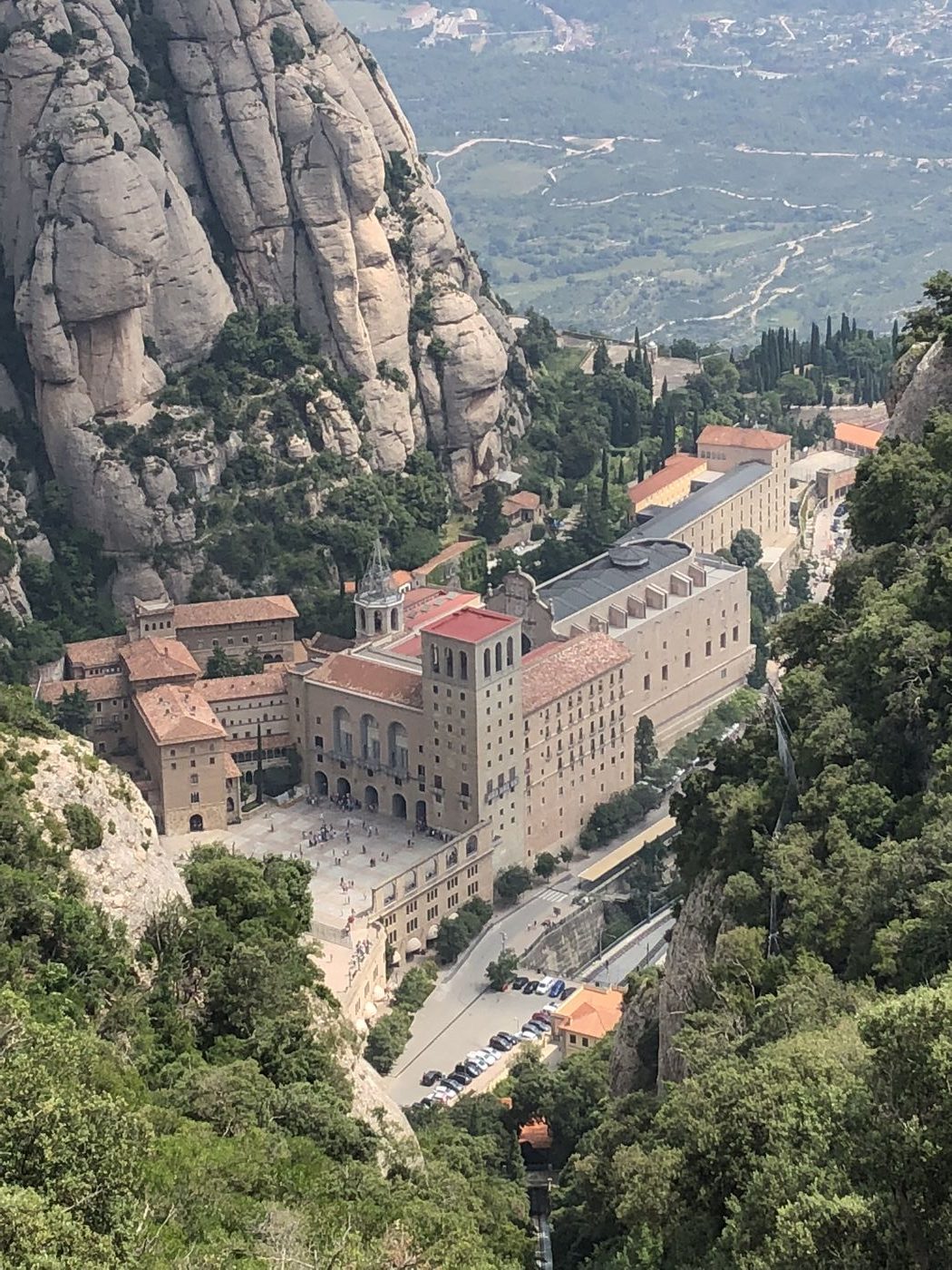
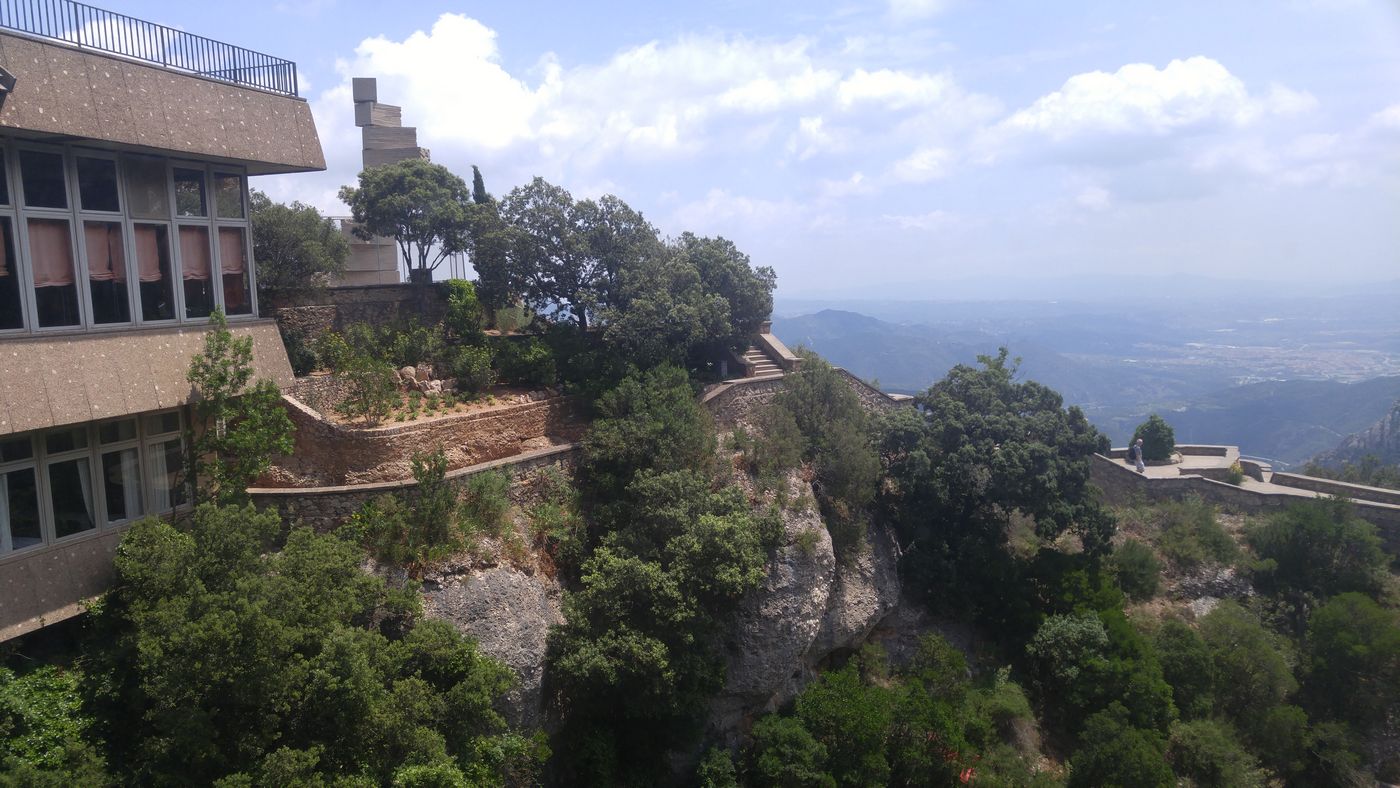
The building on the right houses various restaurants and meeting rooms for groups: 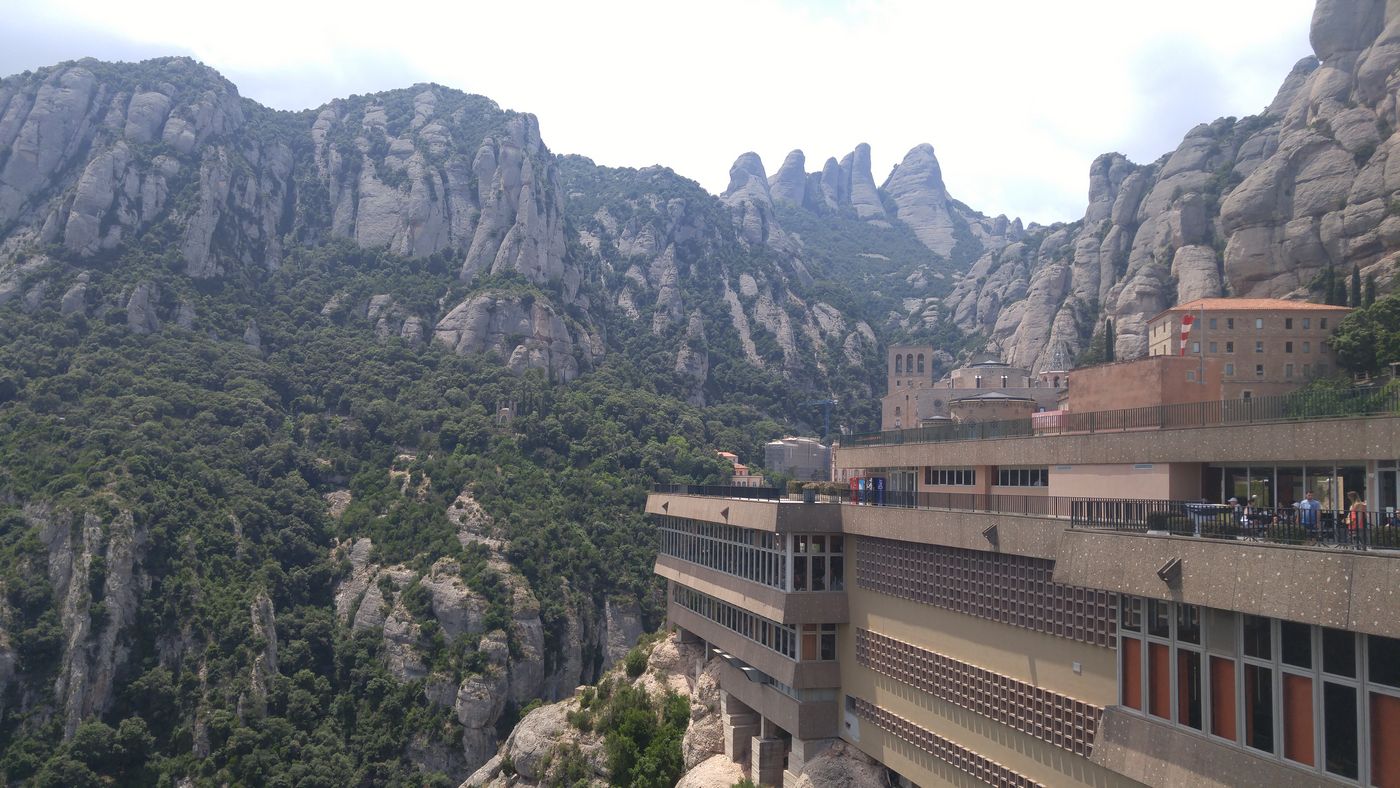
Magnificent view of the Llobregat River Valley: 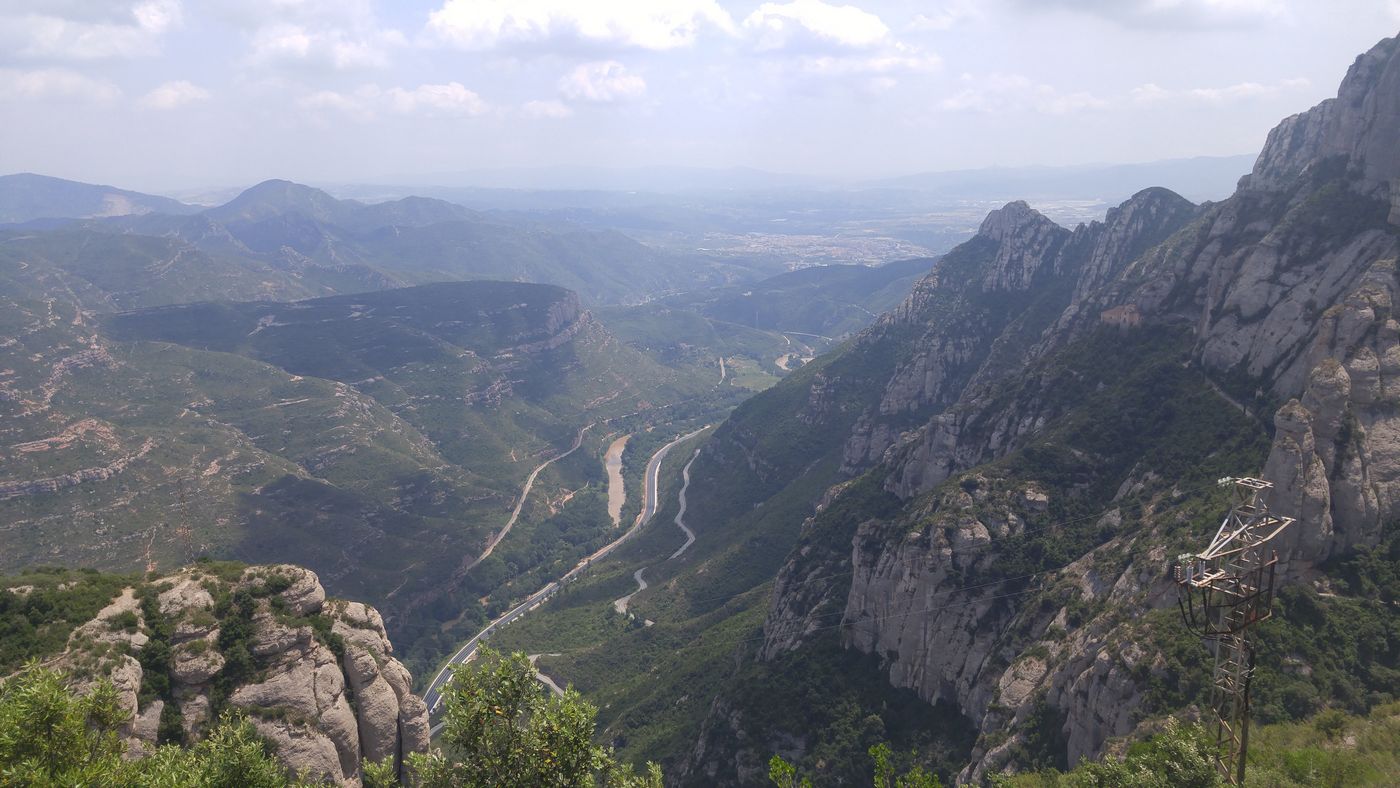
The lower funicular station (Funicular de la Santa Cova): 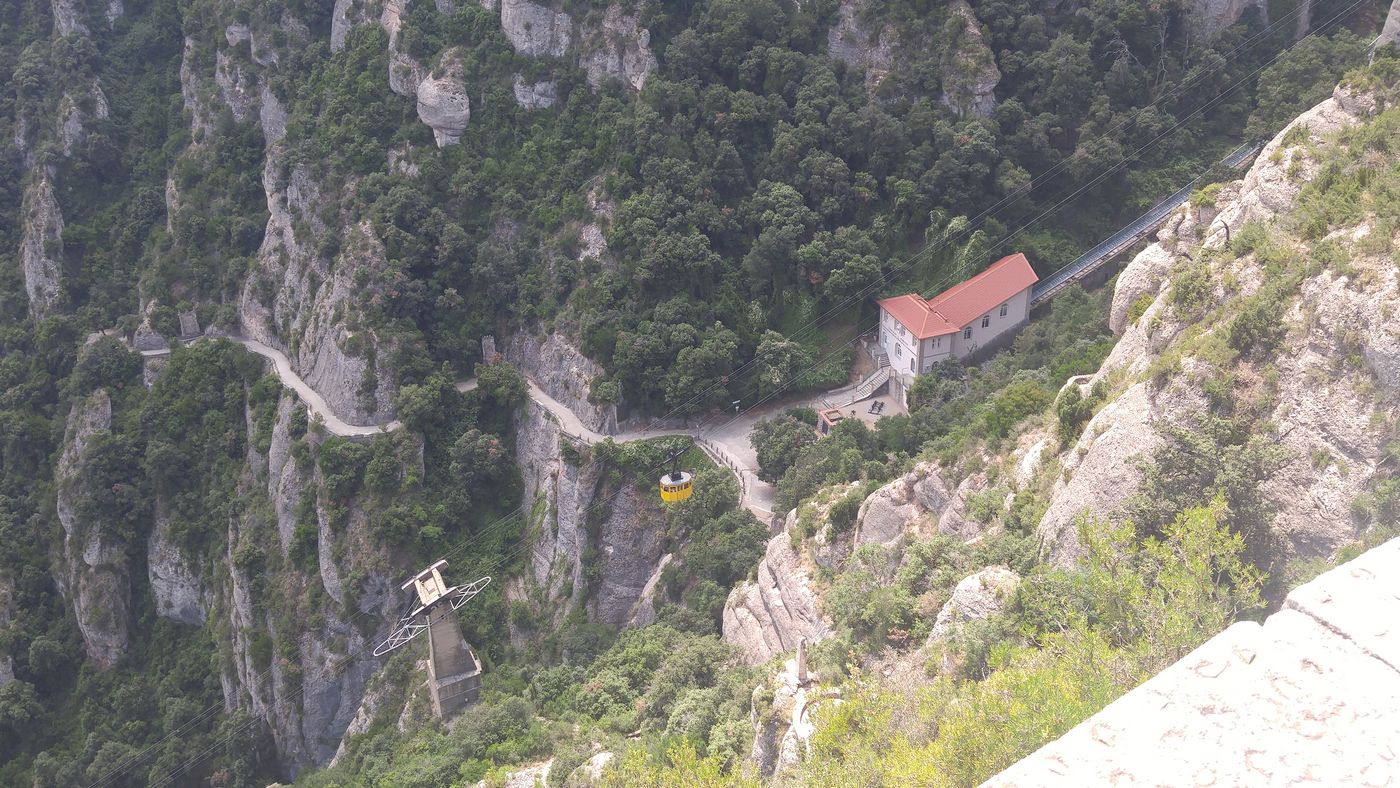
My wife and I and our traveling companions, Matt & Sharon Costello: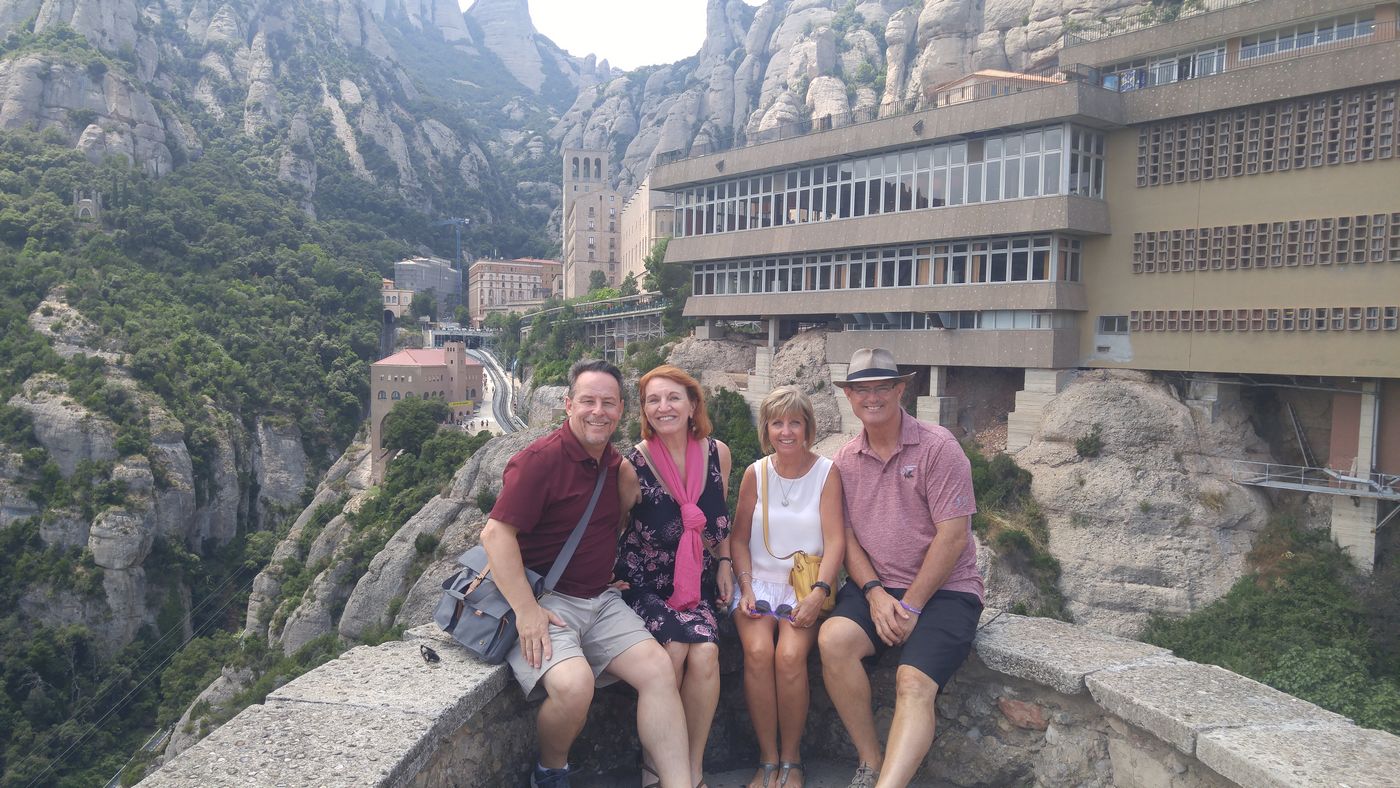
The garden lies behind that wall up there, I believe: 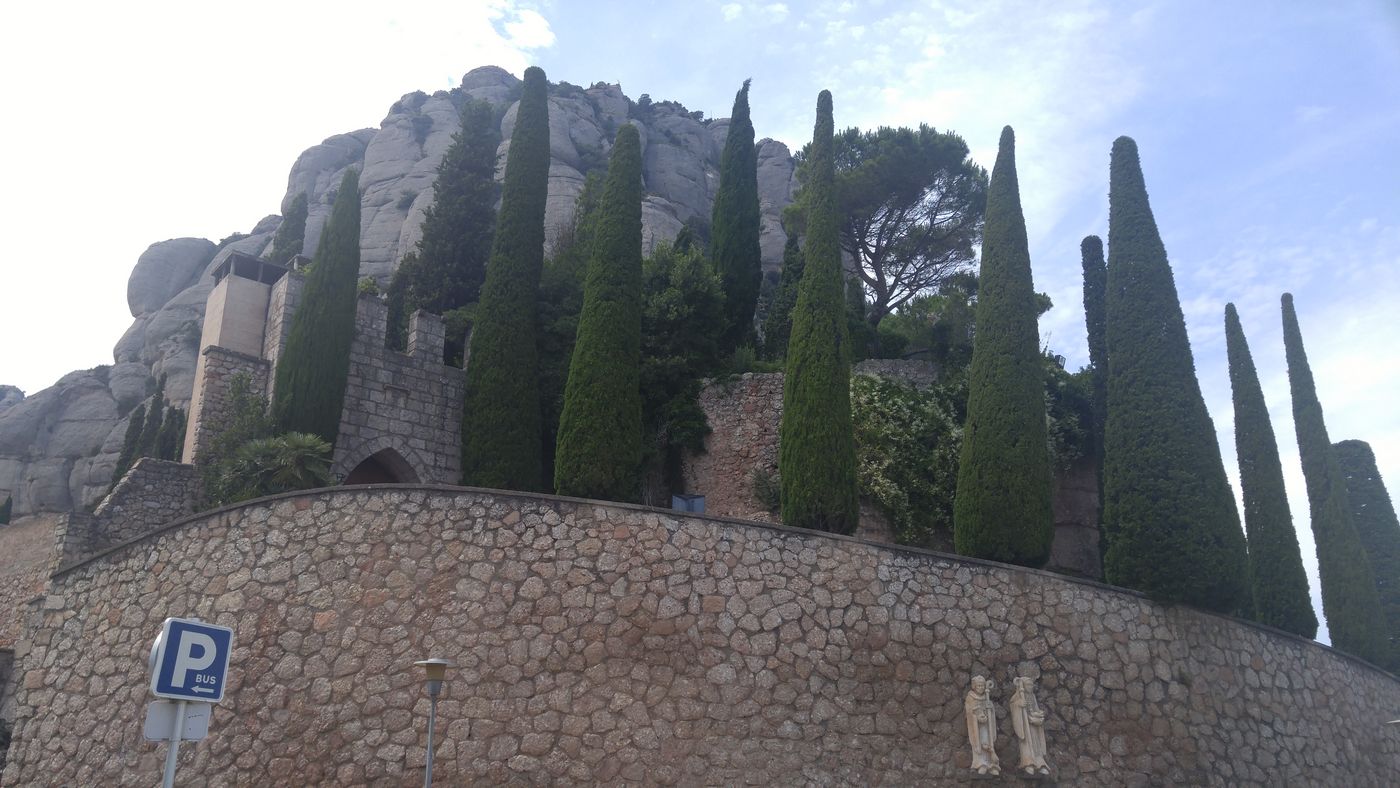
Unfortunately the door was locked: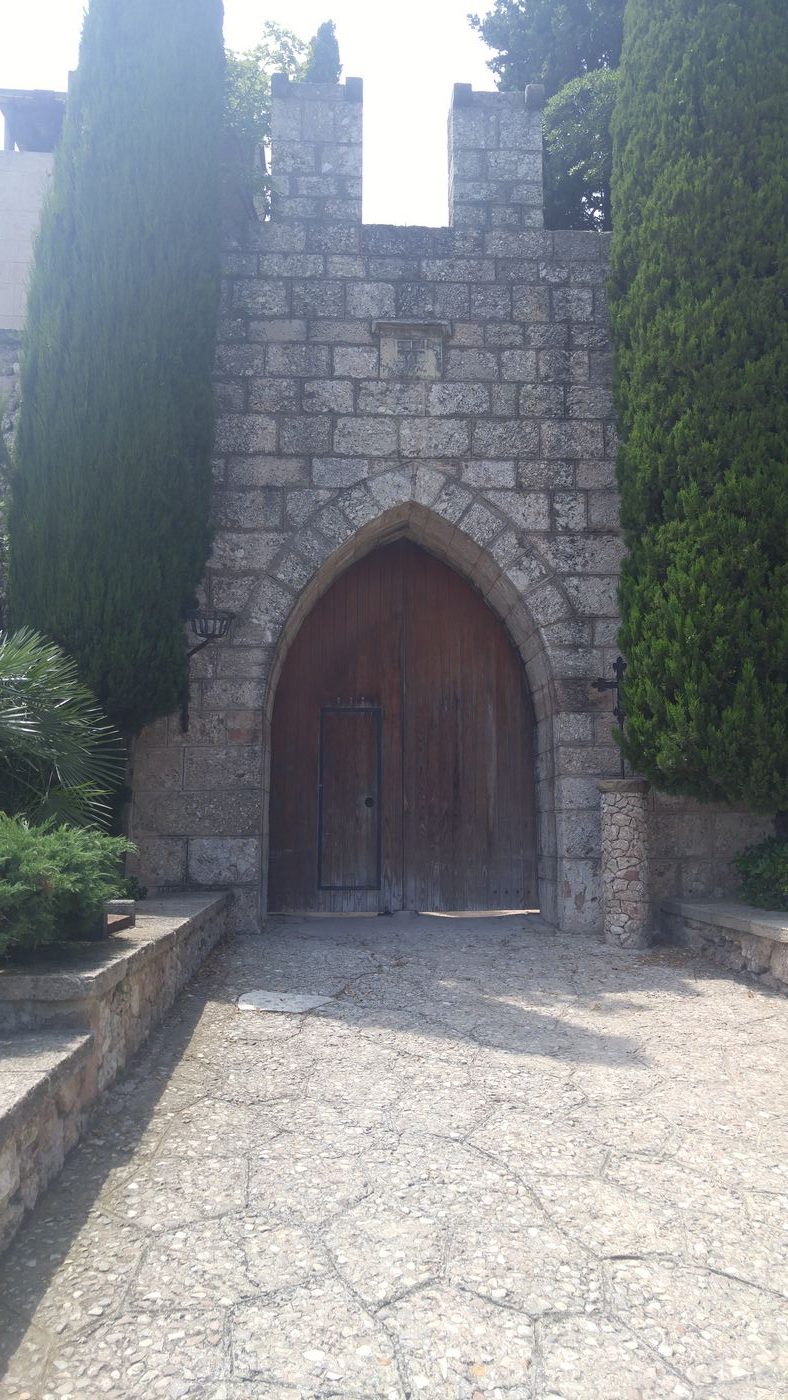
My beautiful wife in a beautiful setting: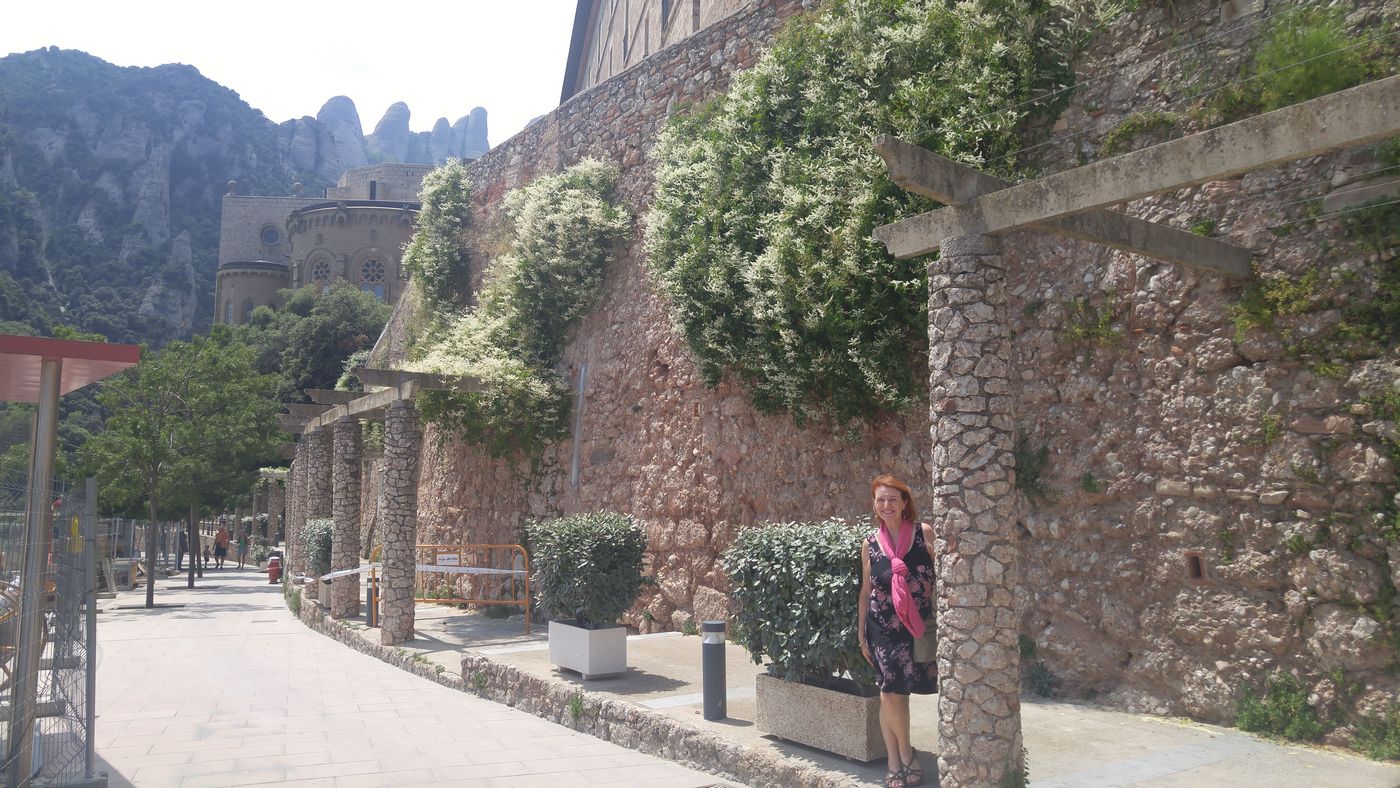
“The Stairway to Understanding” by Josep Maria Subirachs (1976): 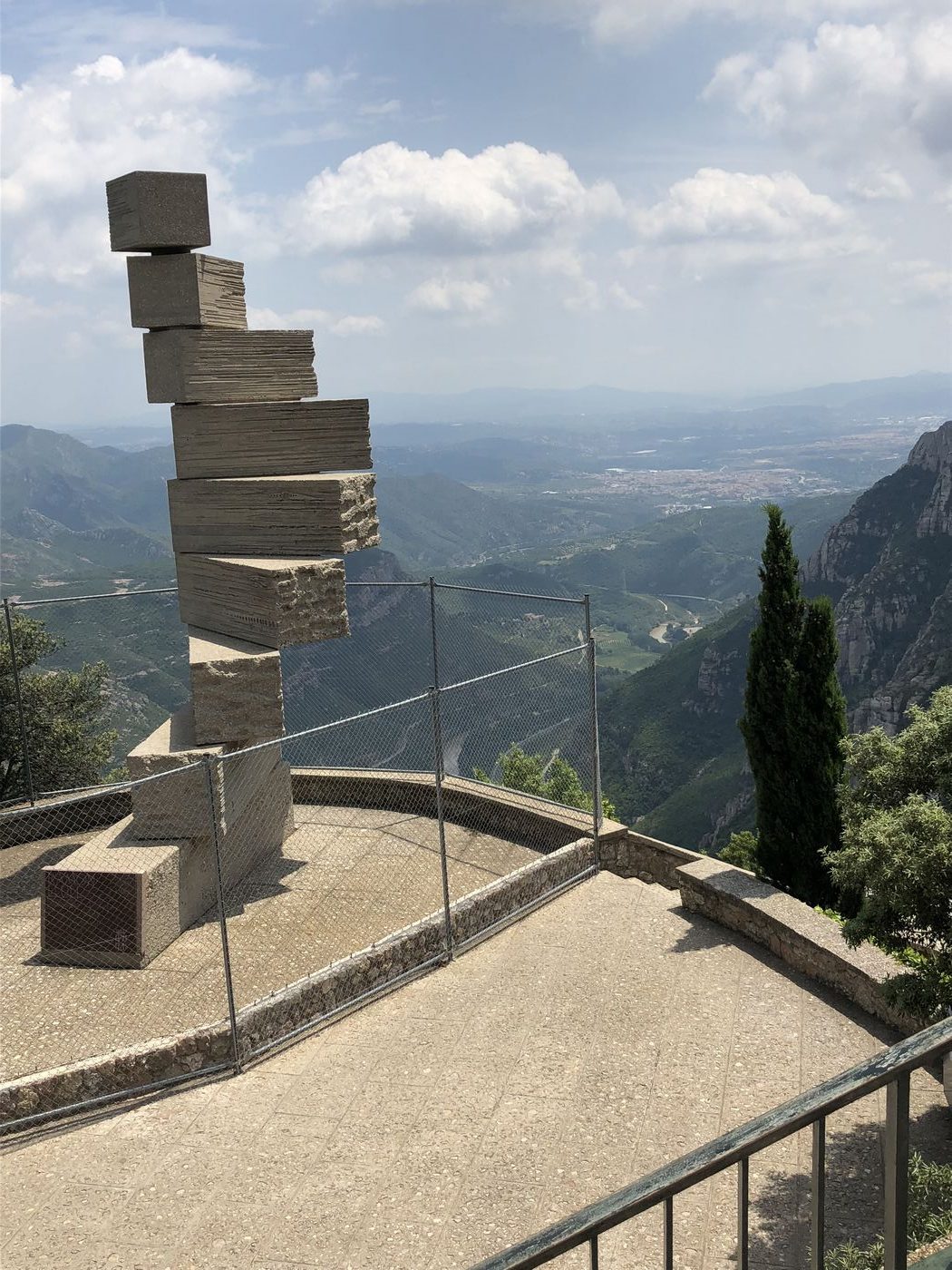
The Viewpoint of the Apostles: 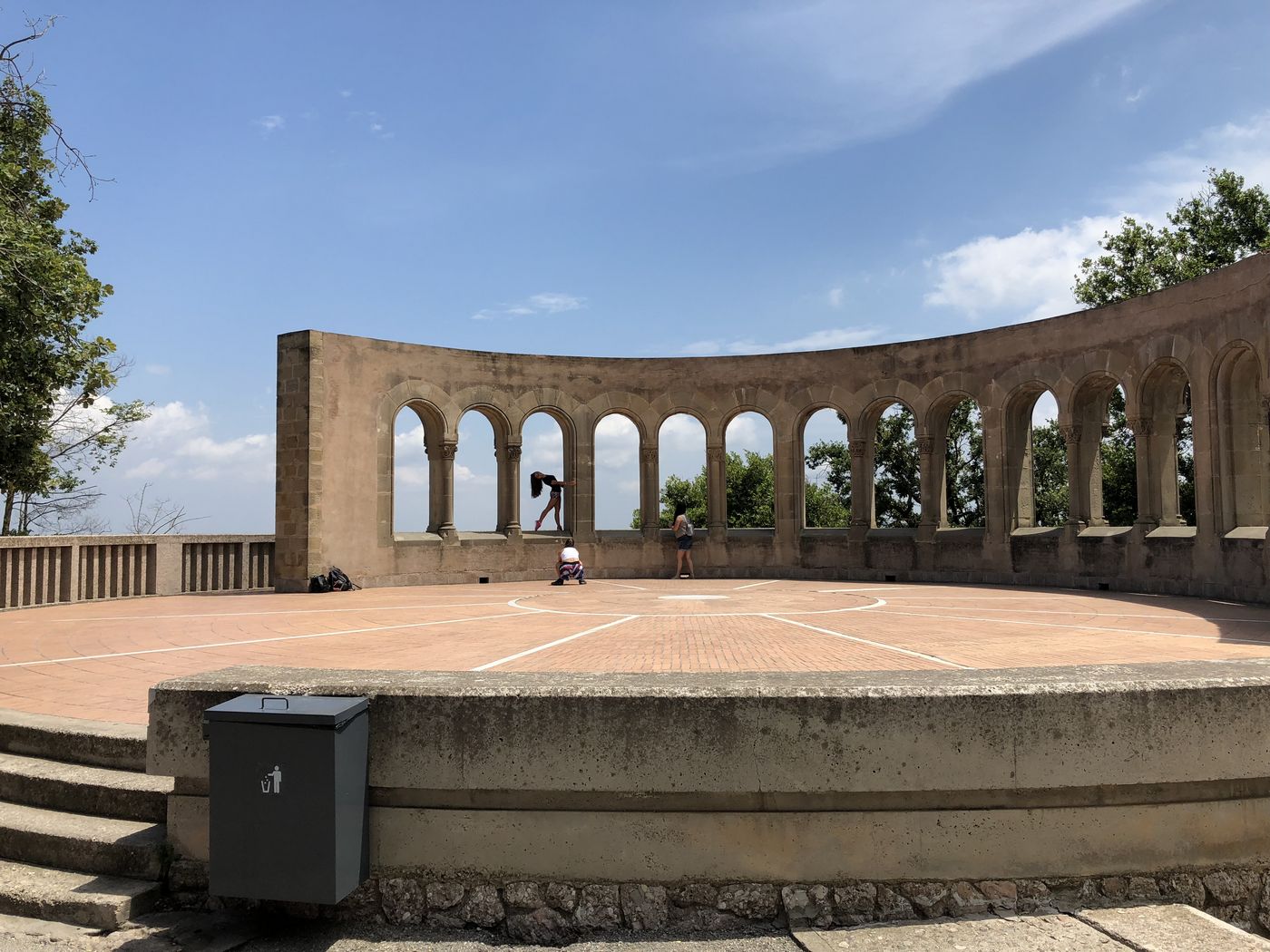
A nice view we didn’t have the opportunity to see, but pictured in the tram terminal: 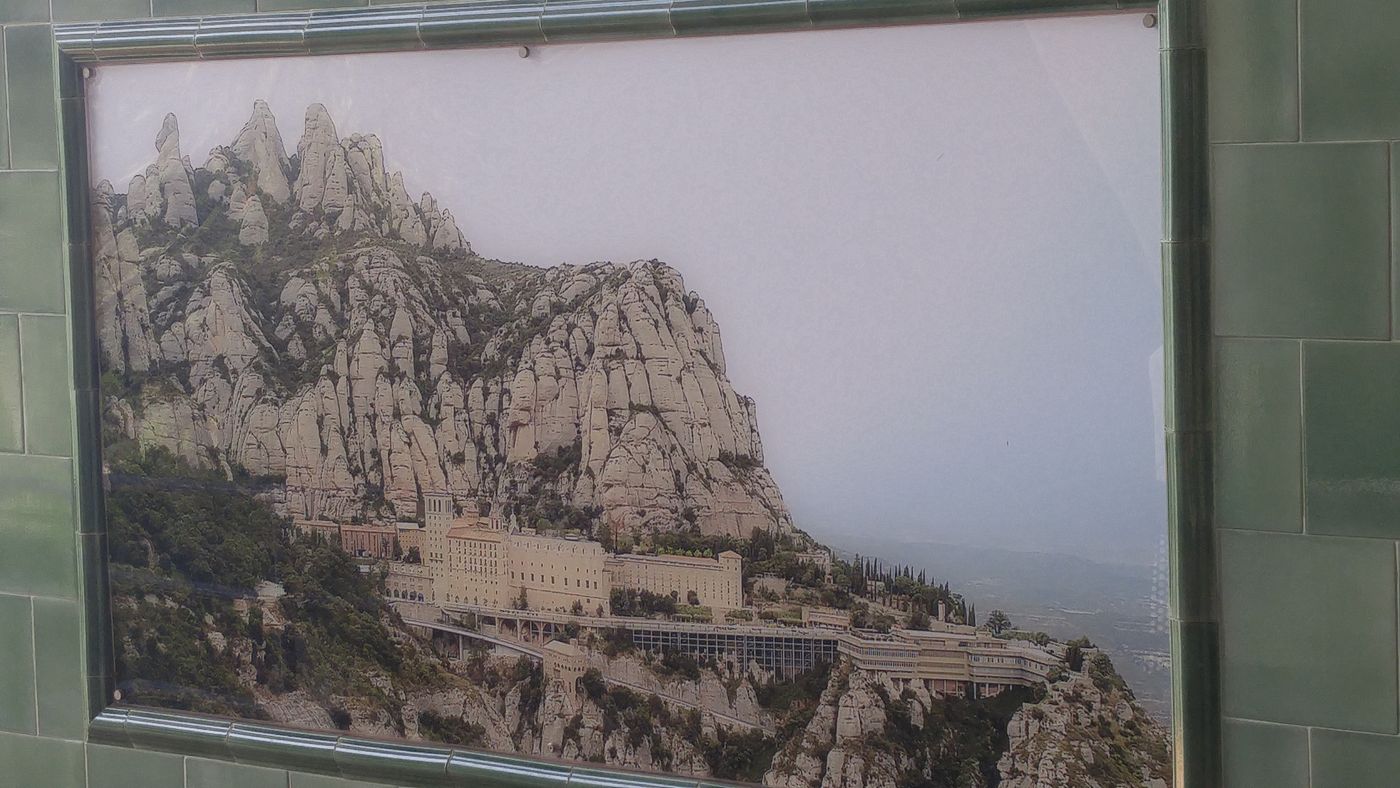
The Atrium of the Basilica
The Atrium is formed by two cloisters in front of the main entrance to the church with six stories of rooms for the monks above. The atrium floor was designed by Father Benet Martinez which reproduces the design by Michelangelo for the Campidoglio in Rome. The space is meant to be a transition between the profane and the sacred.
The following image copyright Matthew Costello – all rights reserved: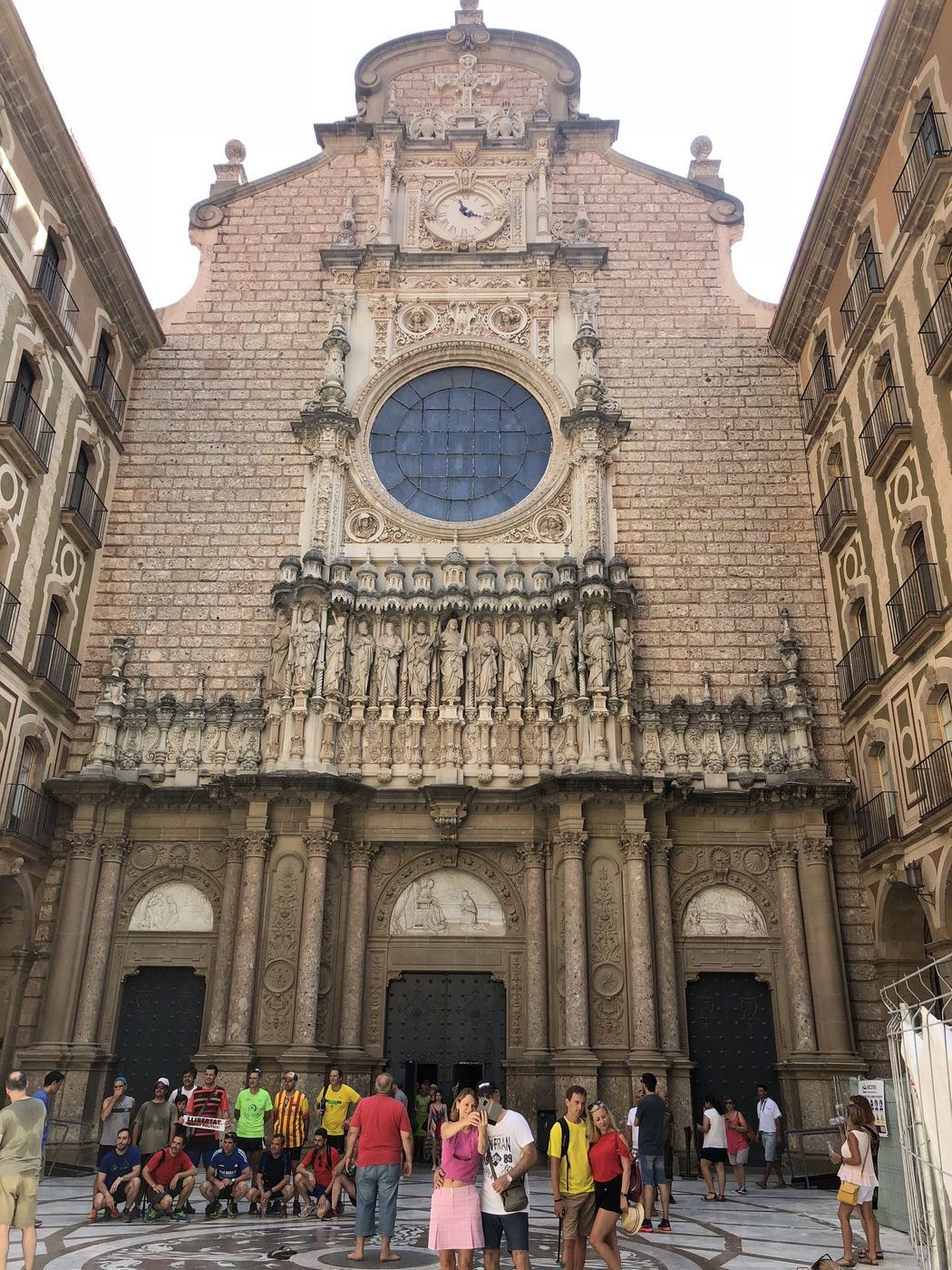
Jesus and the twelve disciples sculpted by Agapit Vallmitjana. The three tympana reliefs are by his brother Venanci Vallmitjana depicting Bishop Urquinaona asking Pope Leo XIII to proclaim Our Lady of Montserrat as patron saint of Catolonia (center), the birth of Mary (right), and the Dormition (left):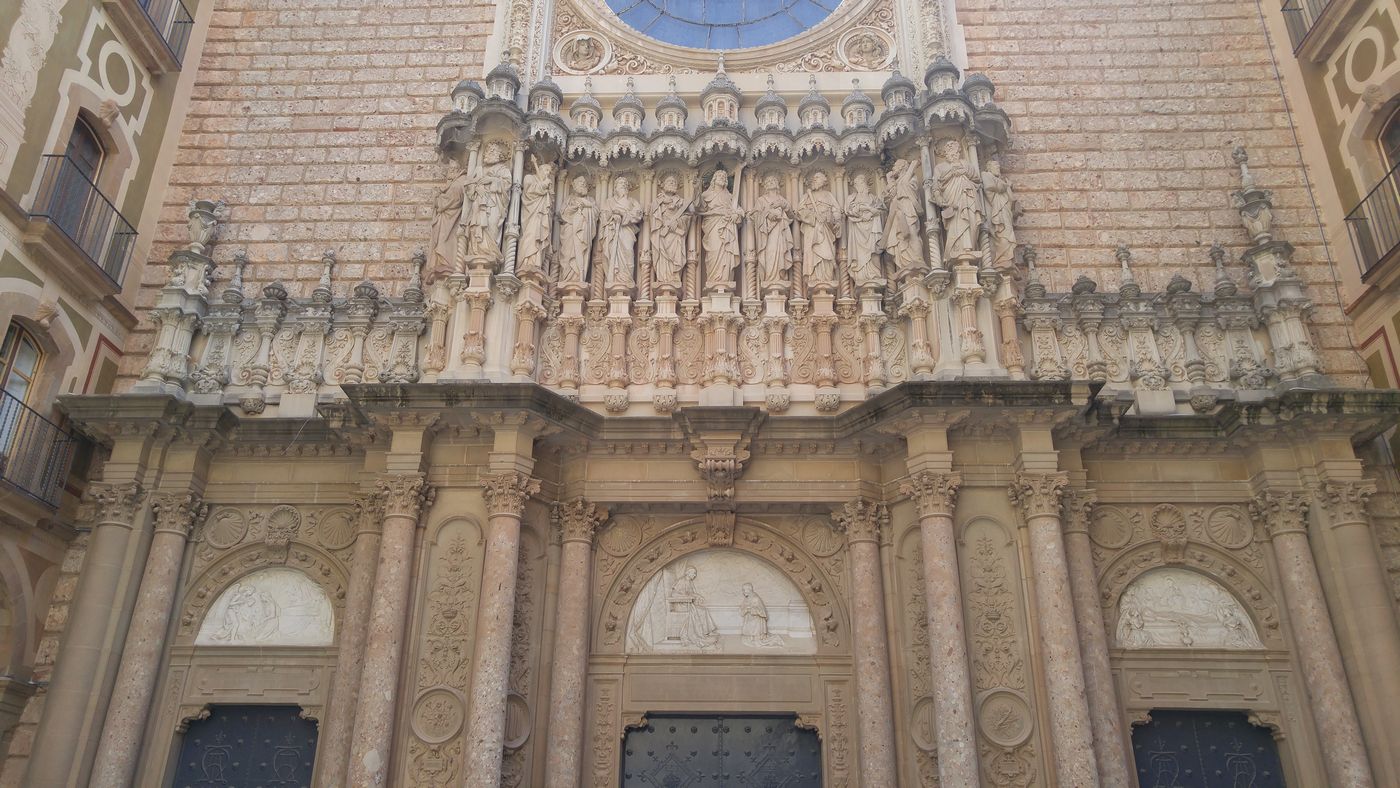
The tomb of John of Aragon – 1528. I love Renaissance-era sculpture!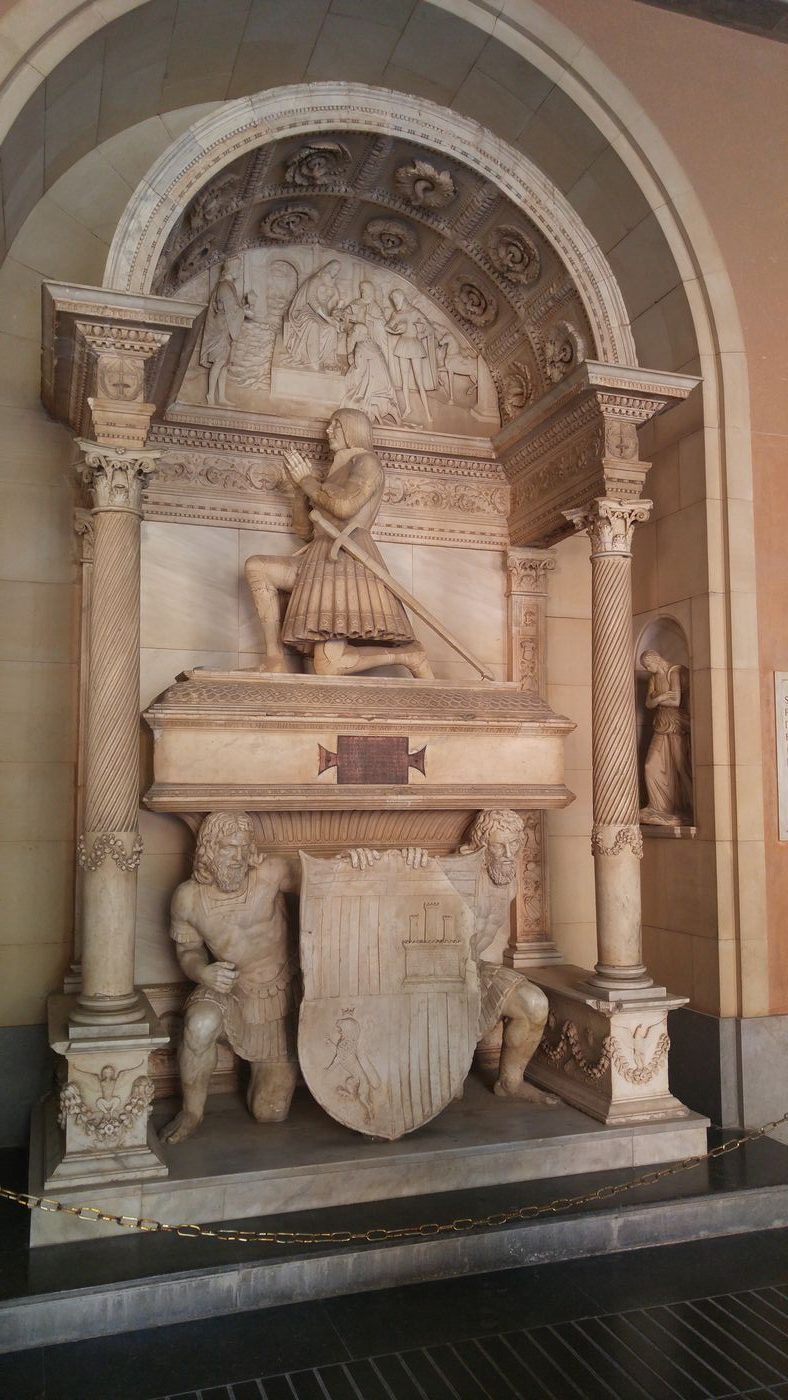
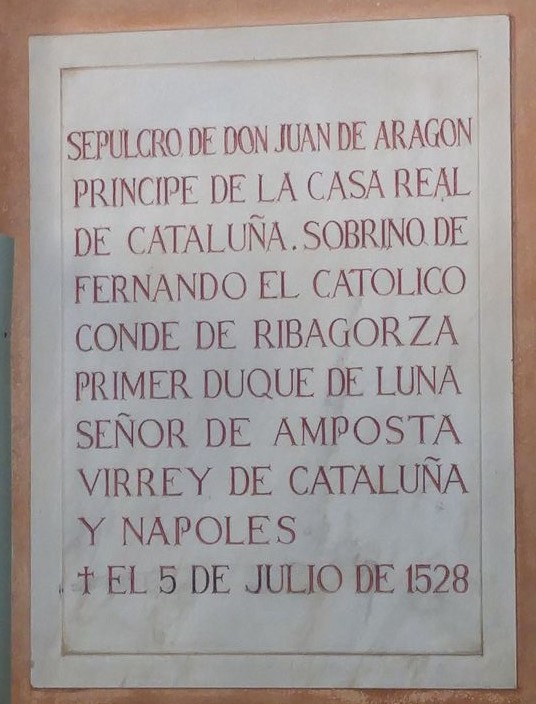
The Basilica & Black Madonna
The statue of Our Lady of Montserrat is a gilded polychrome Romanesque carving estimated to be from the late 12th-century. The color of the face and hands of Mary and the baby Jesus are most likely due to a slow process of oxidation of the varnish as well as the action of candle smoke and oil lamps over the centuries. The hands of both Mary and Jesus were replaced due to damage from the French War in 1811. The orb in Mary’s right hand represents the sphere of the universe, and the baby Jesus holds a pineapple (it was an orb in the original version).
The church measures 68m long x 21.5m wide x 33m high. It’s a single nave with six chapels on each side arranged between the buttresses. Above the side chapels are galleries. The side chapels artistically range from classic Renaissance in appearance up to more modern interpretations of various religious motifs.
The following image copyright Matthew Costello – all rights reserved: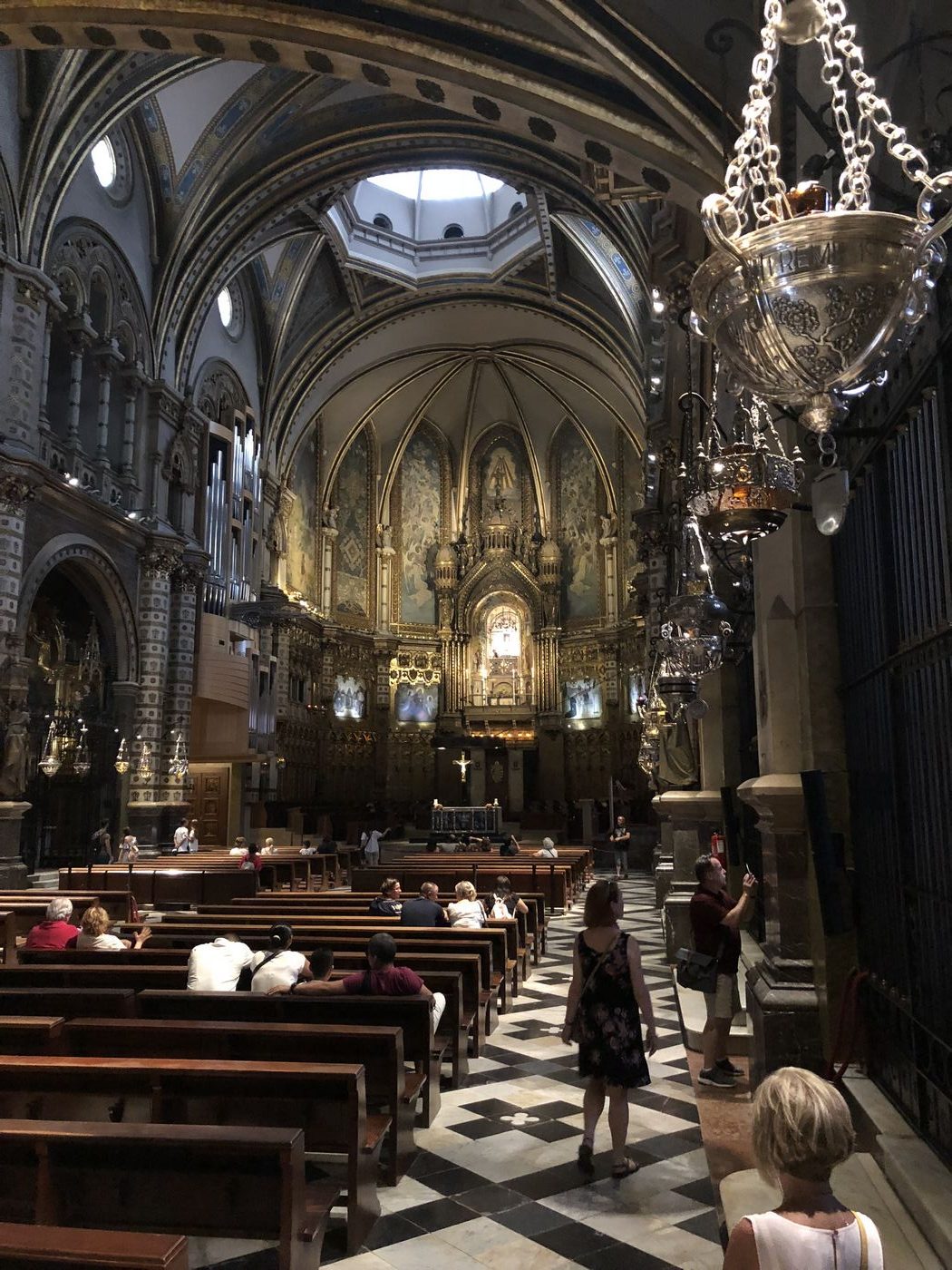
High above the altar is the statue of Our Lady of Montserrat (you can see the silhouette of two people in front of it):
The passage on the right side of the church up to the statue, designed by the architect Francesc Folguera. You first encounter the “Angel Door” with sculpted alabaster angel musicians, patriarchs, prophets, and Mary in the tympanum – completed between 1946-1948: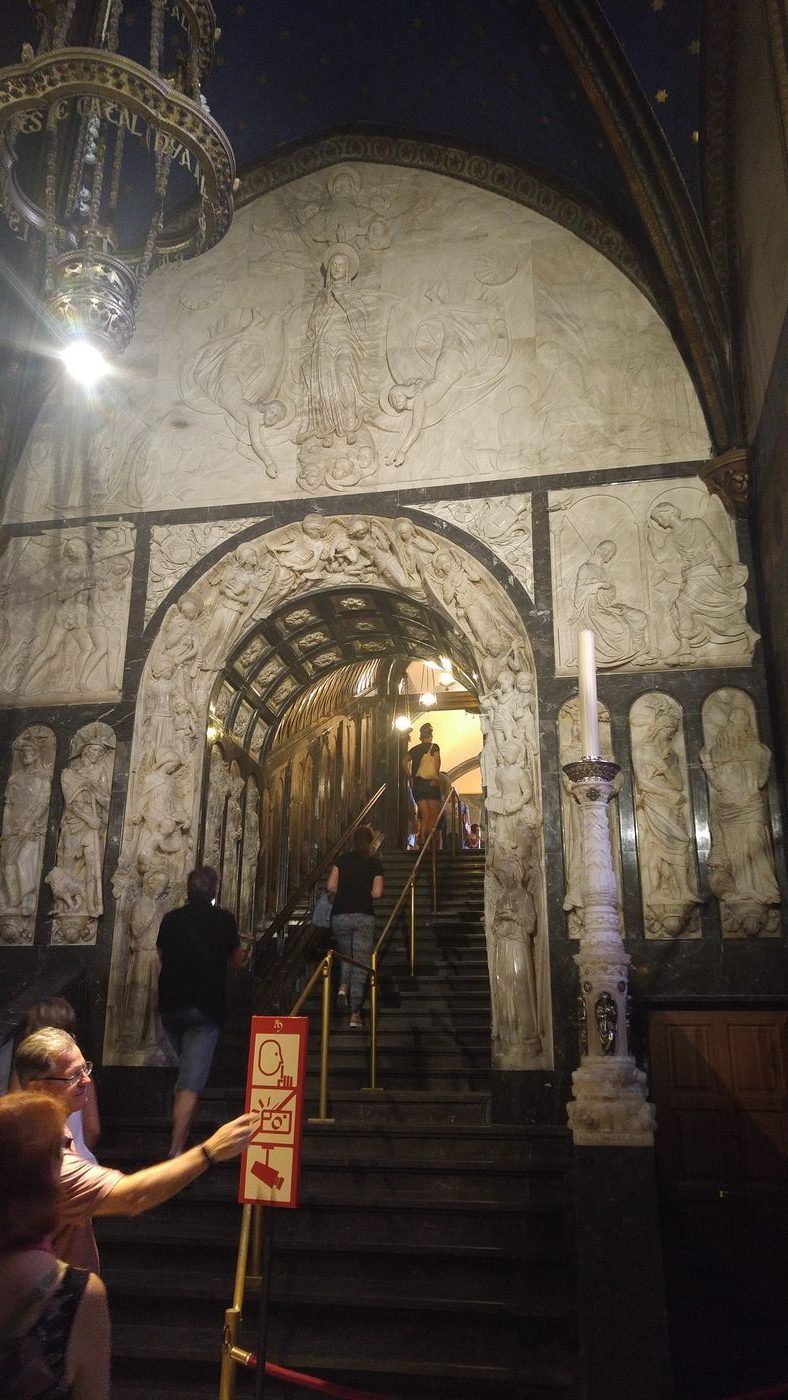
Continuing up the staircase we find beautiful mosaics – the holy virgins on the right and the saintly mothers on the left: 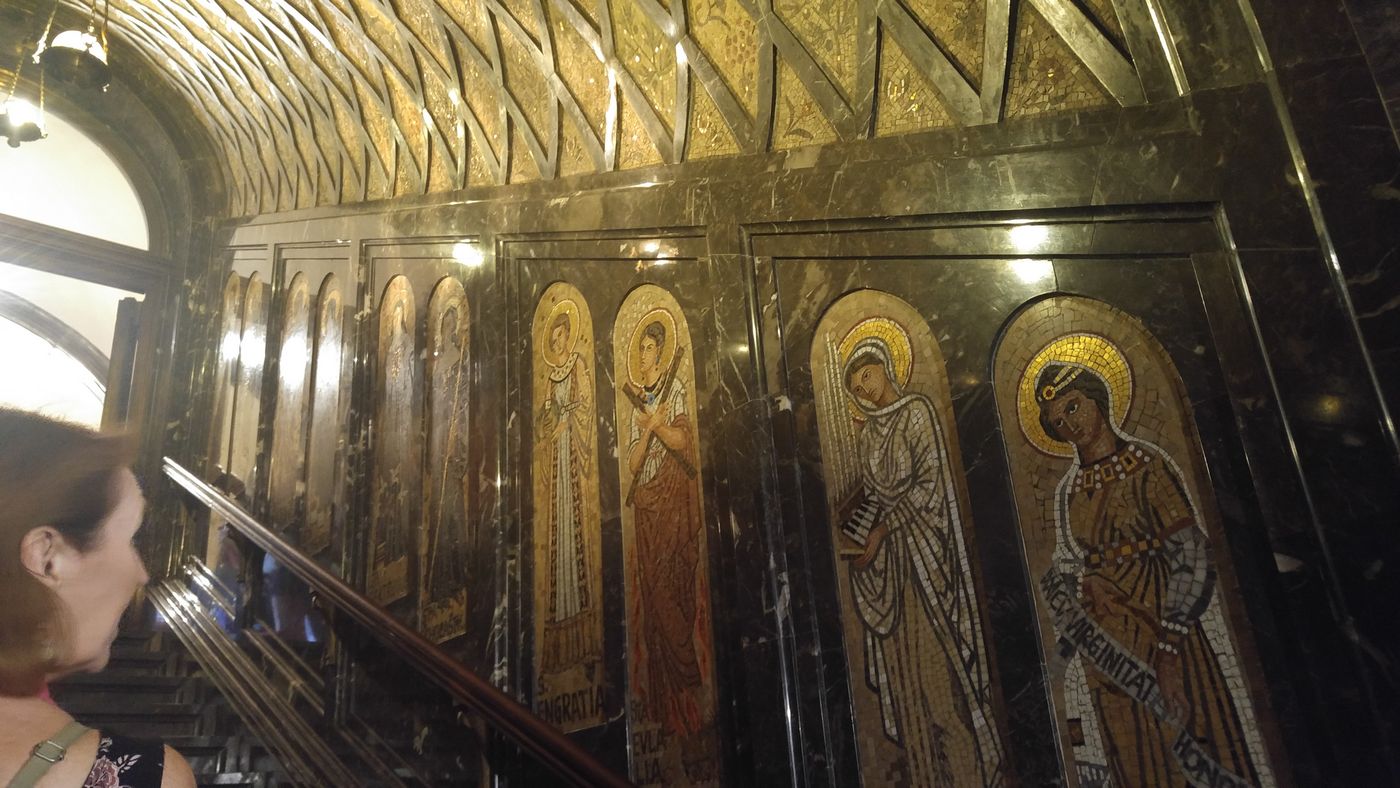
Mosaics at the niche, executed by Santiago Padrós: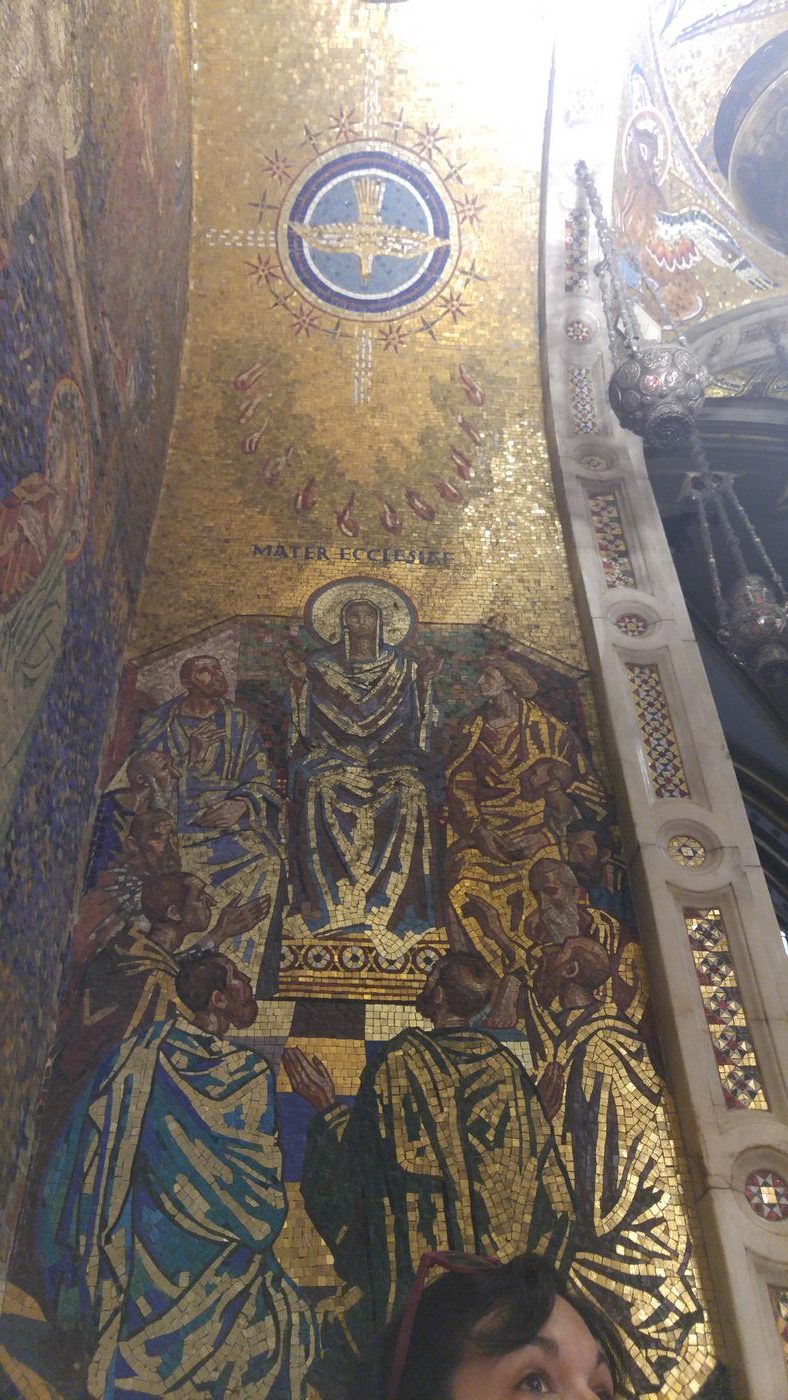
The niche containing the Black Madonna. The statue is protected by a clear covering with her hand and orb exposed allowing visitors to touch it: 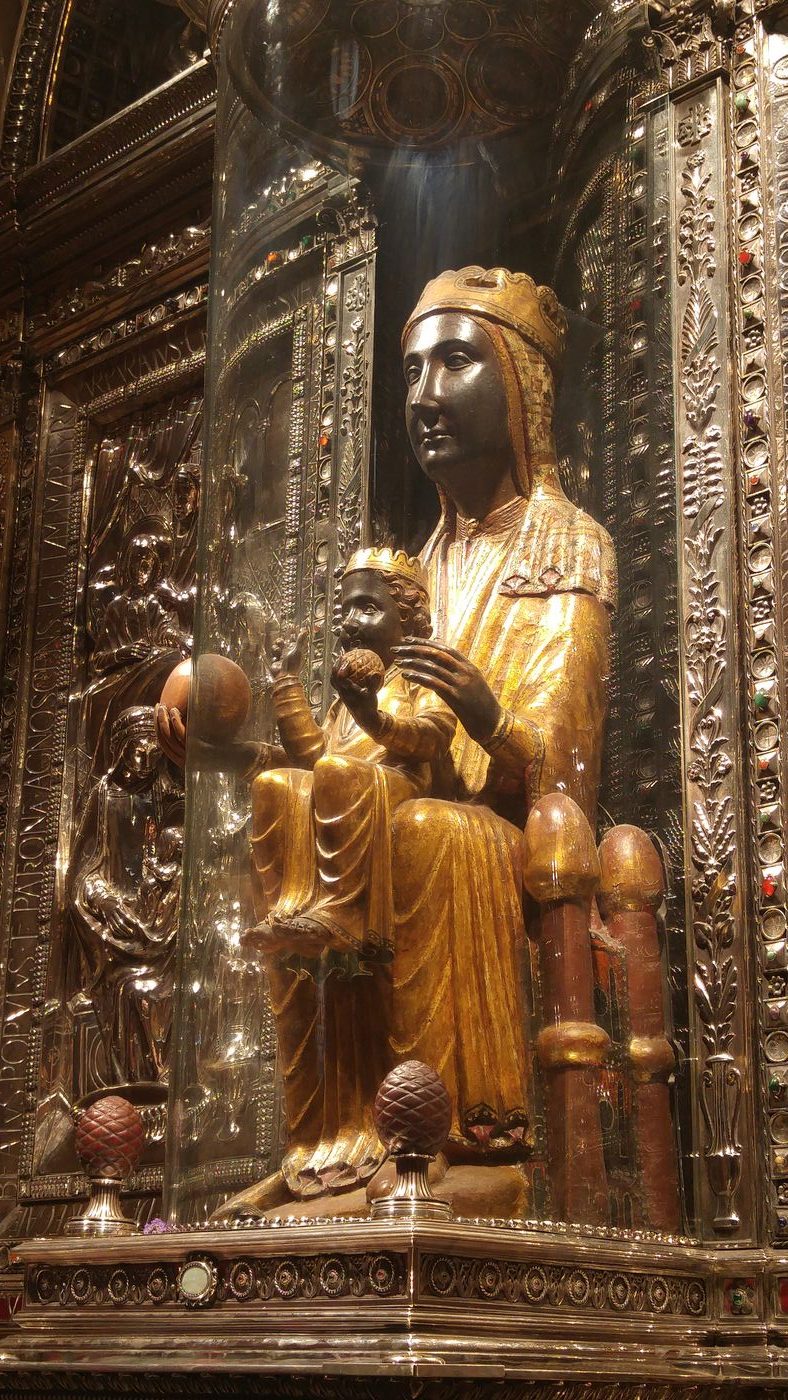
The following image copyright Matthew Costello – all rights reserved: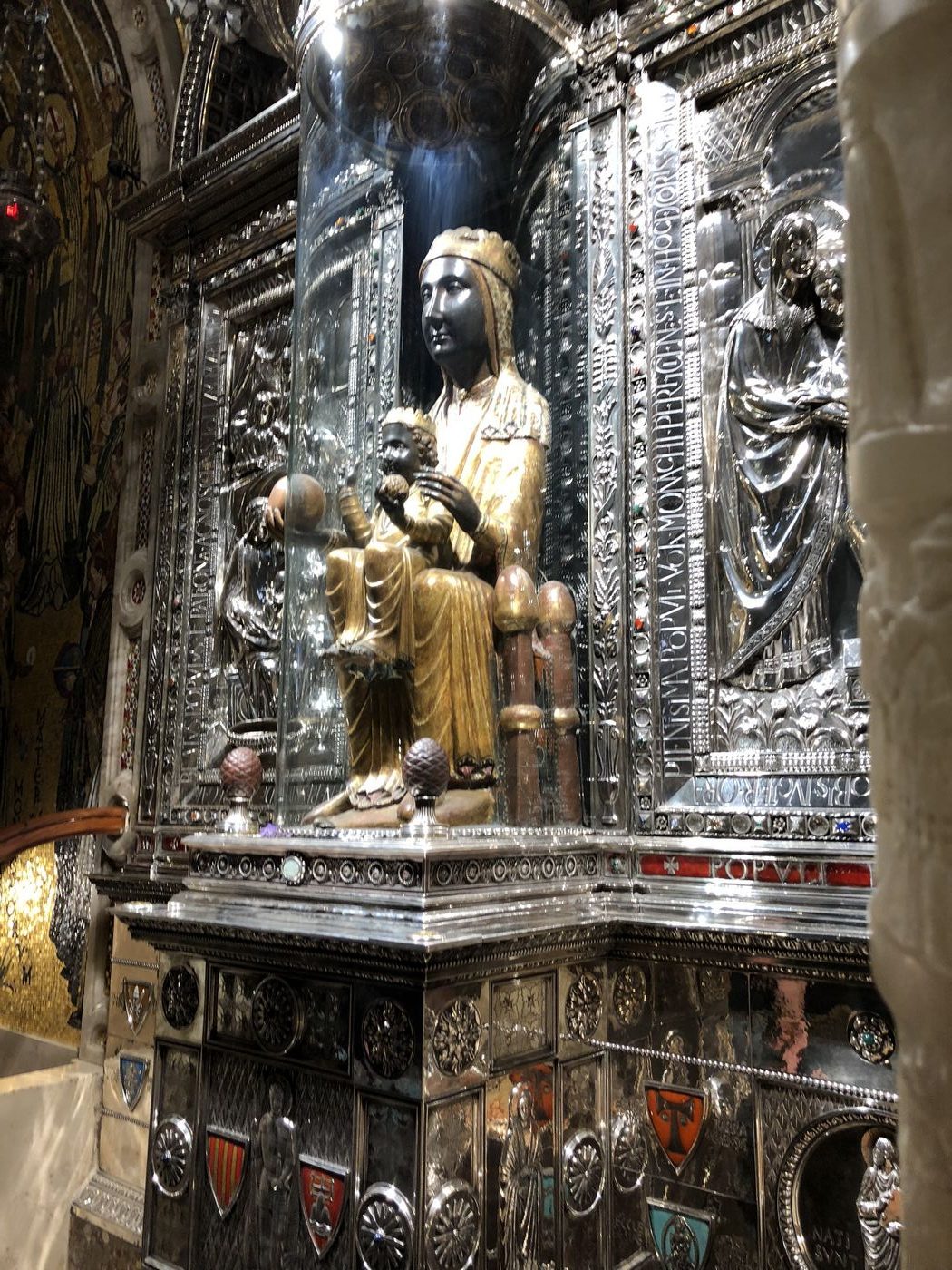
Beautiful silver doors at the bottom of both ascending and descending staircases, designed by Josep Obiols (1956): 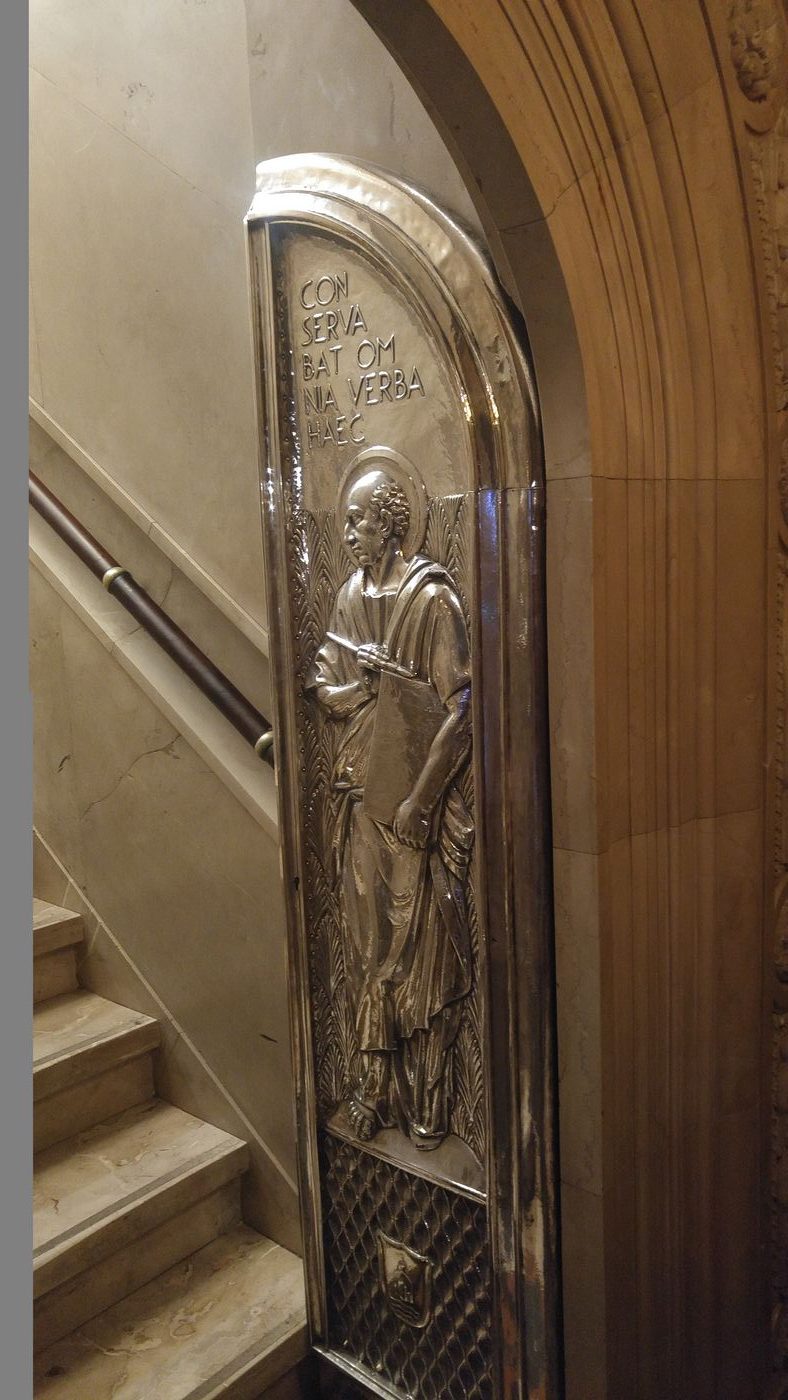
The beautiful Chapel of the Niche, located behind the Black Madonna statue (which is in the center of the image below). Planned and constructed by the architect Villar and his son Villar i Carmona. The chapel contains beautiful stained glass by Antoni Rigalt, mosaics by Santiago Padrós, sculpture of Saint George slaying the dragon by Agapit Vallmitjana (1893), and the dome’s mural painting by Joan Llimona.
This image copyright Matthew Costello – all rights reserved: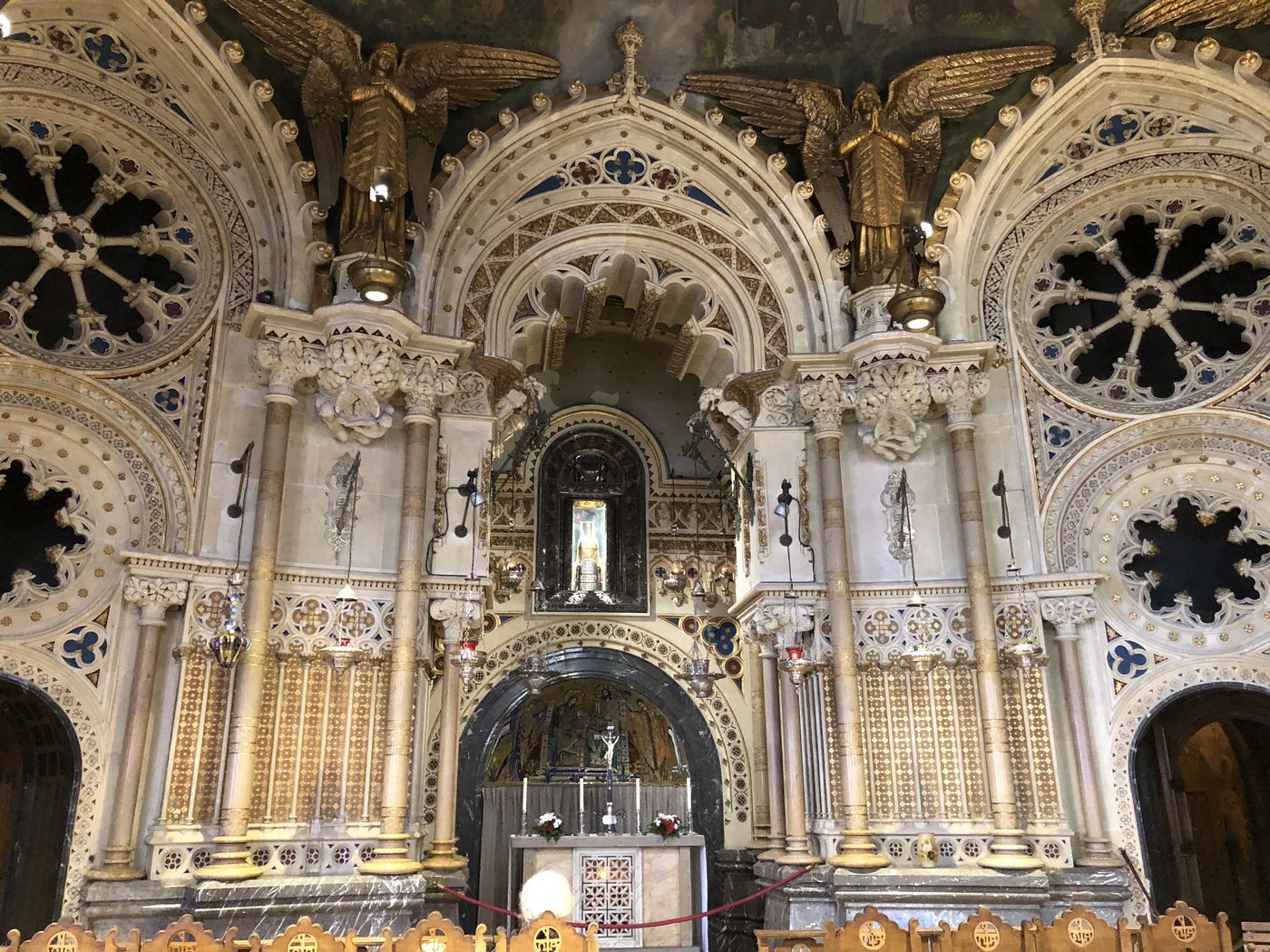
(Featured image photo by the Author: James L. Patterson)
Sources:
- Esteve Serra i Pérez, Montserrat [Guidebook] (GeoColor, 2018)
- Montserrat (mountain), Wikipedia.com
- Santa Maria de Montserrat Abbey, Wikipedia.com
- Virgin of Montserrat, Wikipedia.com
- Abbey of Montserrat (Official Website), www.abadiamontserrat.net
